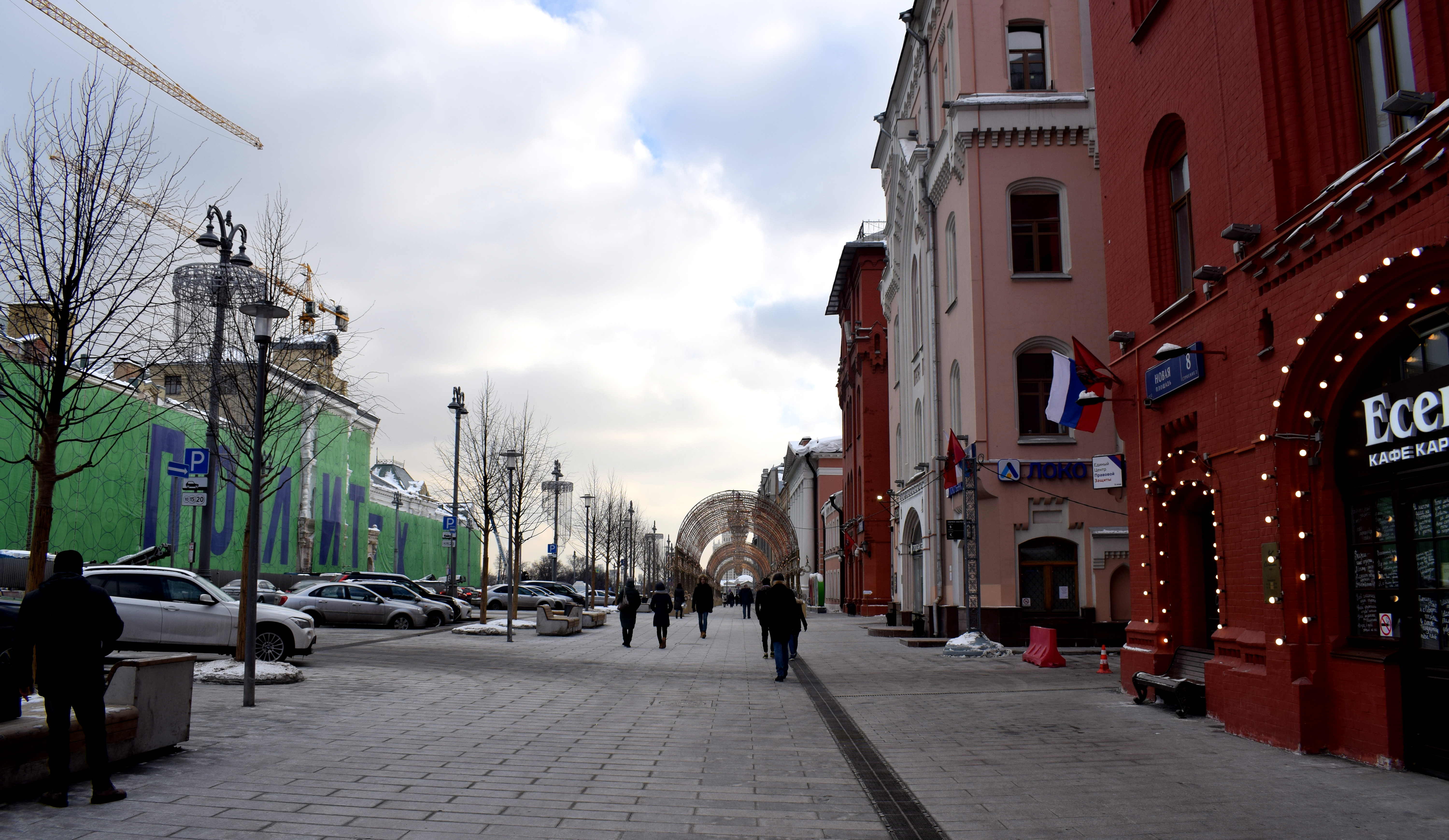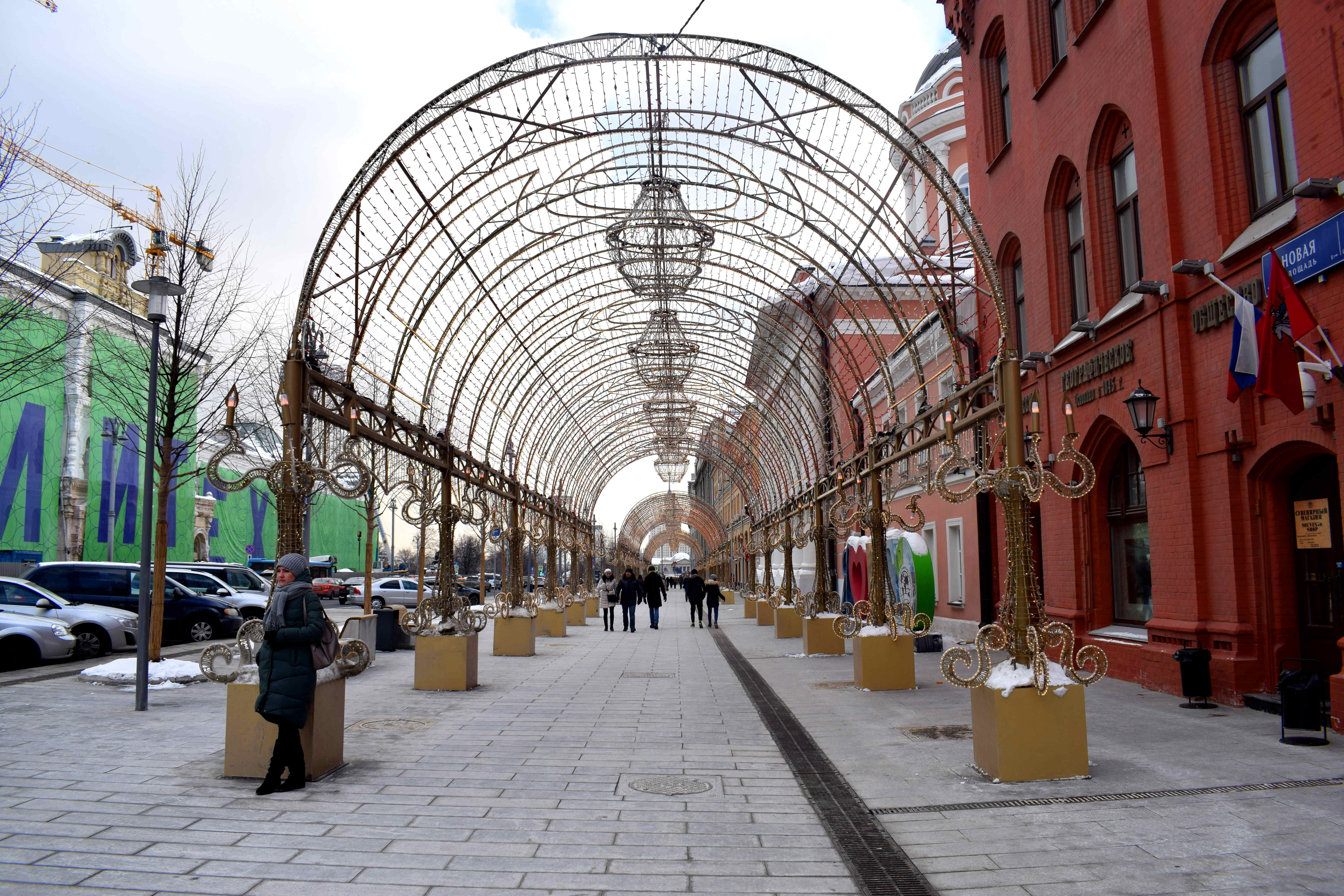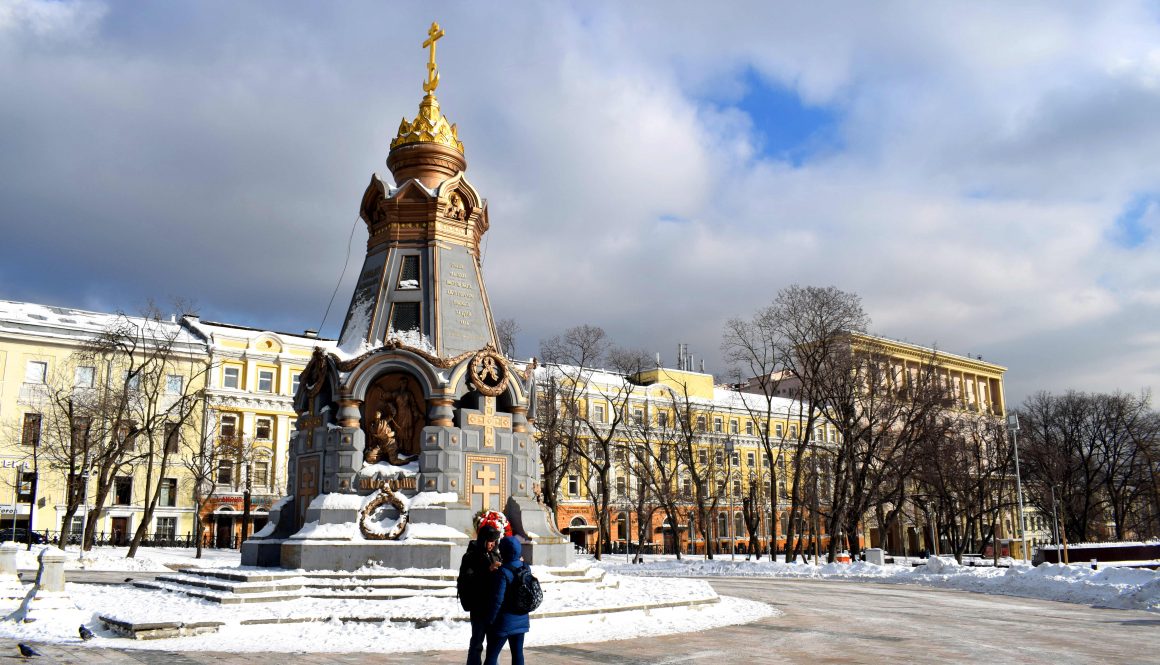Moscow! Pedestrianize Kitai Gorod
Kitai Gorod is one of the most beautiful parts of Moscow. Located in the heart of the city next to Red Square, the area used to boast dozens of churches and a plethora of small businesses before the Bolshevik Revolution in 1917.
The distinguishing feature of the area were the walls of Kitai Gorod built by Italian architects in 1536-1539 and which formed a mini Kremlin surrounding the area.
The name Kitai Gorod used to signify the part of Moscow located within the walls of Kitai Gorod. The walls of Kitai Gorod made up a mini Kremlin surrounding the area on the other city of Red Square opposite of where the Kremlin stands today. They were built in 1536-1539 by Italian architects and over the centuries became a defining symbol of the city. In the 1930’s Stalin decided to demolish the walls.
In their attempt to erase all aspects of Russian and Czarist history, the communists tore down churches across the entire Soviet Union, as well as old architectual monuments like the walls of Kitai Gorod. They did this to erase all memory of the old order. In many ways this is not much different to how ISIS has been destroying ancient architecture in Iraq and Syria to build their new order of an Islamic State.
This is what the entrance to Kitai Gorod looked before the walls were torn down in the 1930’s.
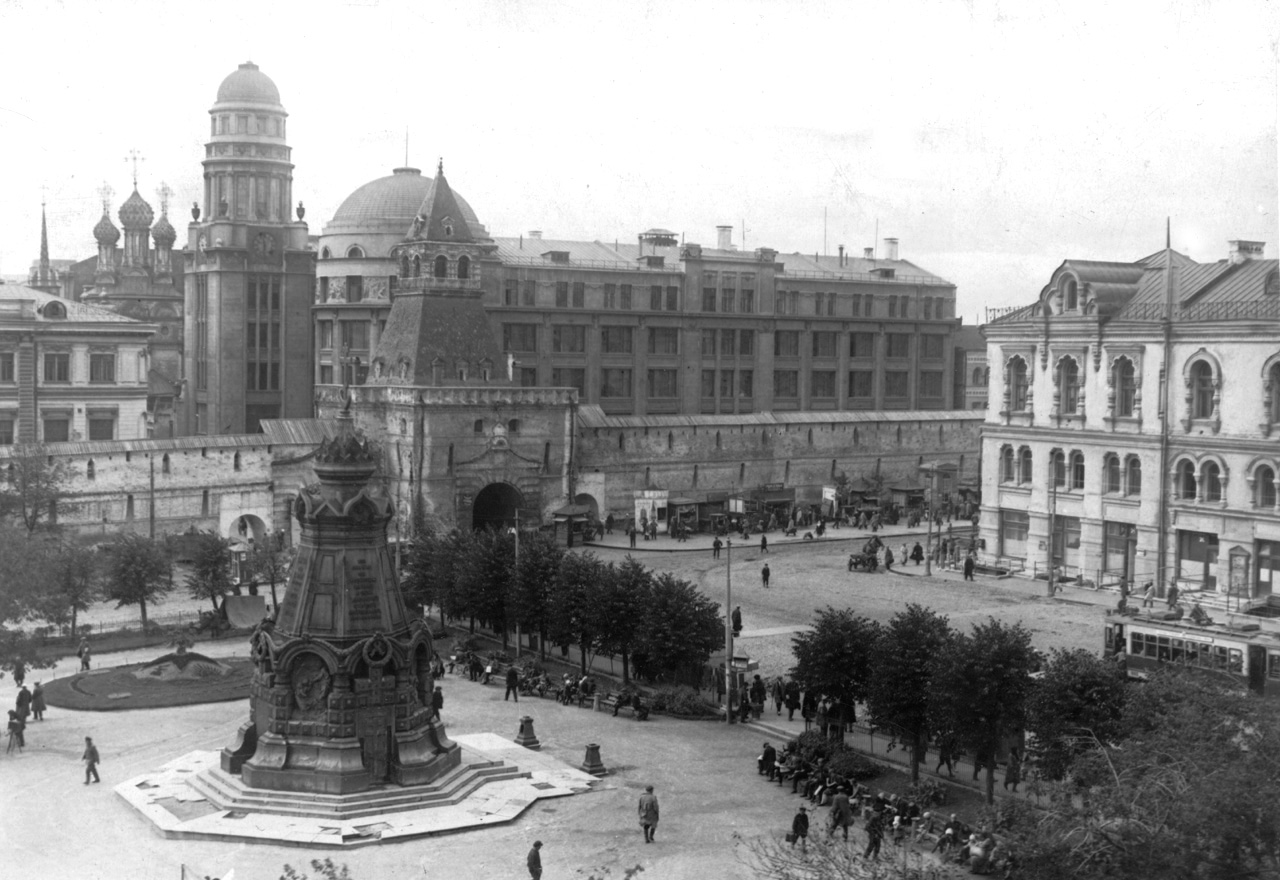
And here is that same area today. While Kitai Gorod remains one of Moscow’s most attractive areas, much has been lost in seventy years of communist rule.
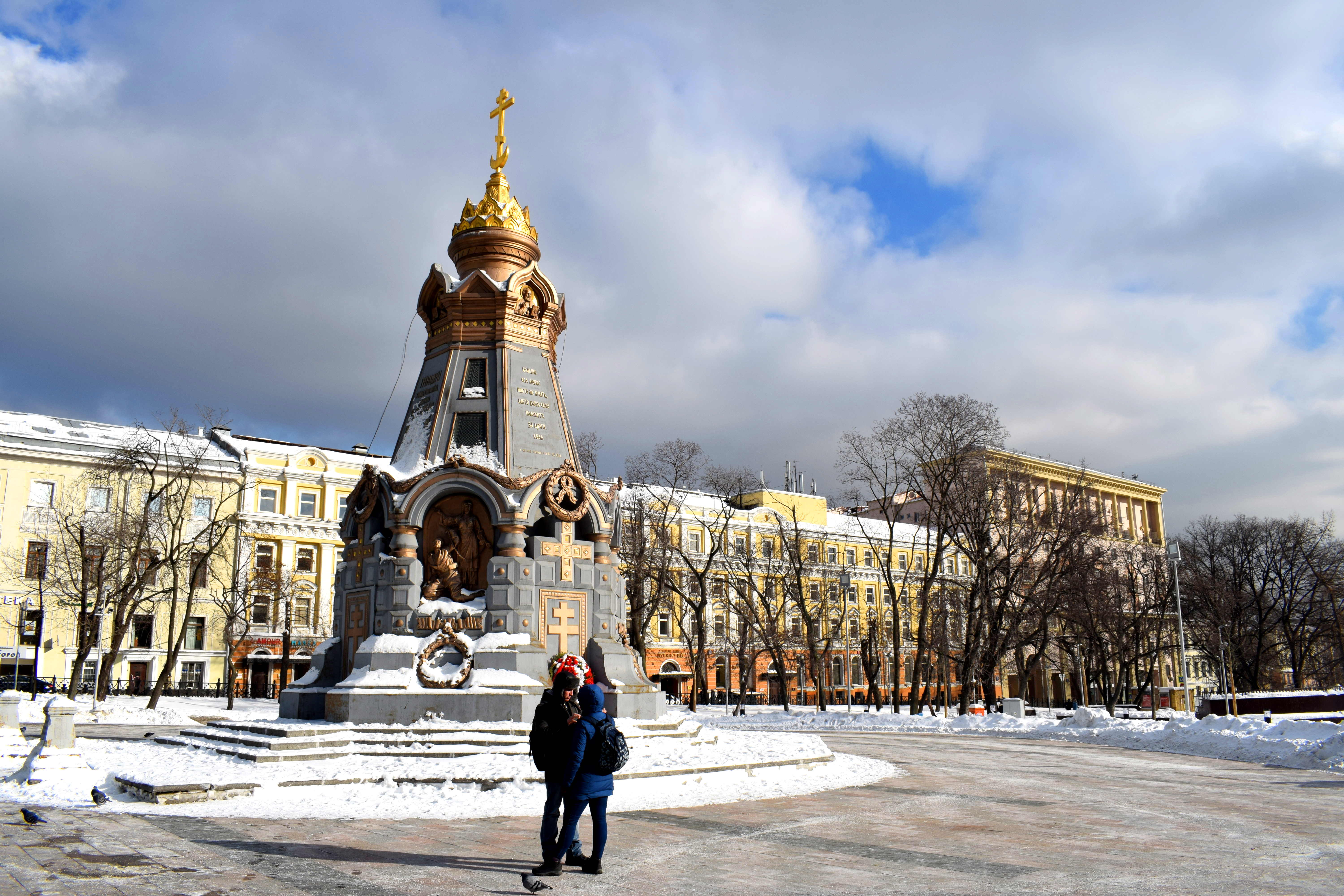 In particular what’s been lost were the cozy narrow cobble-stoned streets, the trams and the pedestrians. Take a look at a panorama of Kitai Gorod in 1887.
In particular what’s been lost were the cozy narrow cobble-stoned streets, the trams and the pedestrians. Take a look at a panorama of Kitai Gorod in 1887.
 And here is the street that used to run parallel to the walls of Kitai Gorod in the 1930’s a little further away around Lubyanskaya Ploshad. Take note of the trams and the pedestrians and how beautiful the wall was.
And here is the street that used to run parallel to the walls of Kitai Gorod in the 1930’s a little further away around Lubyanskaya Ploshad. Take note of the trams and the pedestrians and how beautiful the wall was.
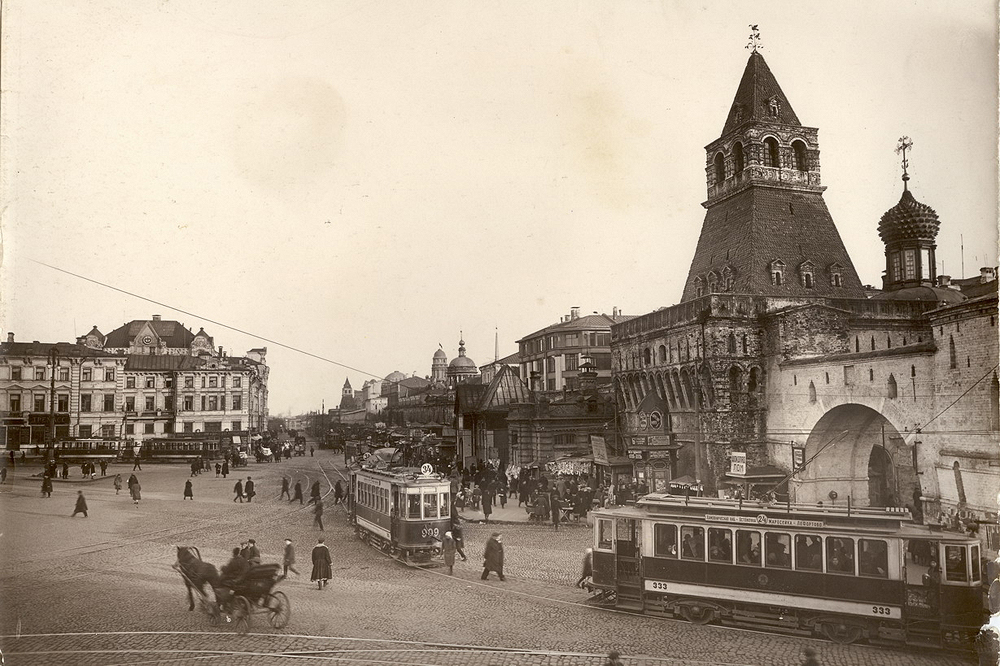
Here’s that same street in 2018 a little further down. The walls are gone. The trams are gone. And the people are gone. What we get today is just concrete and cars.
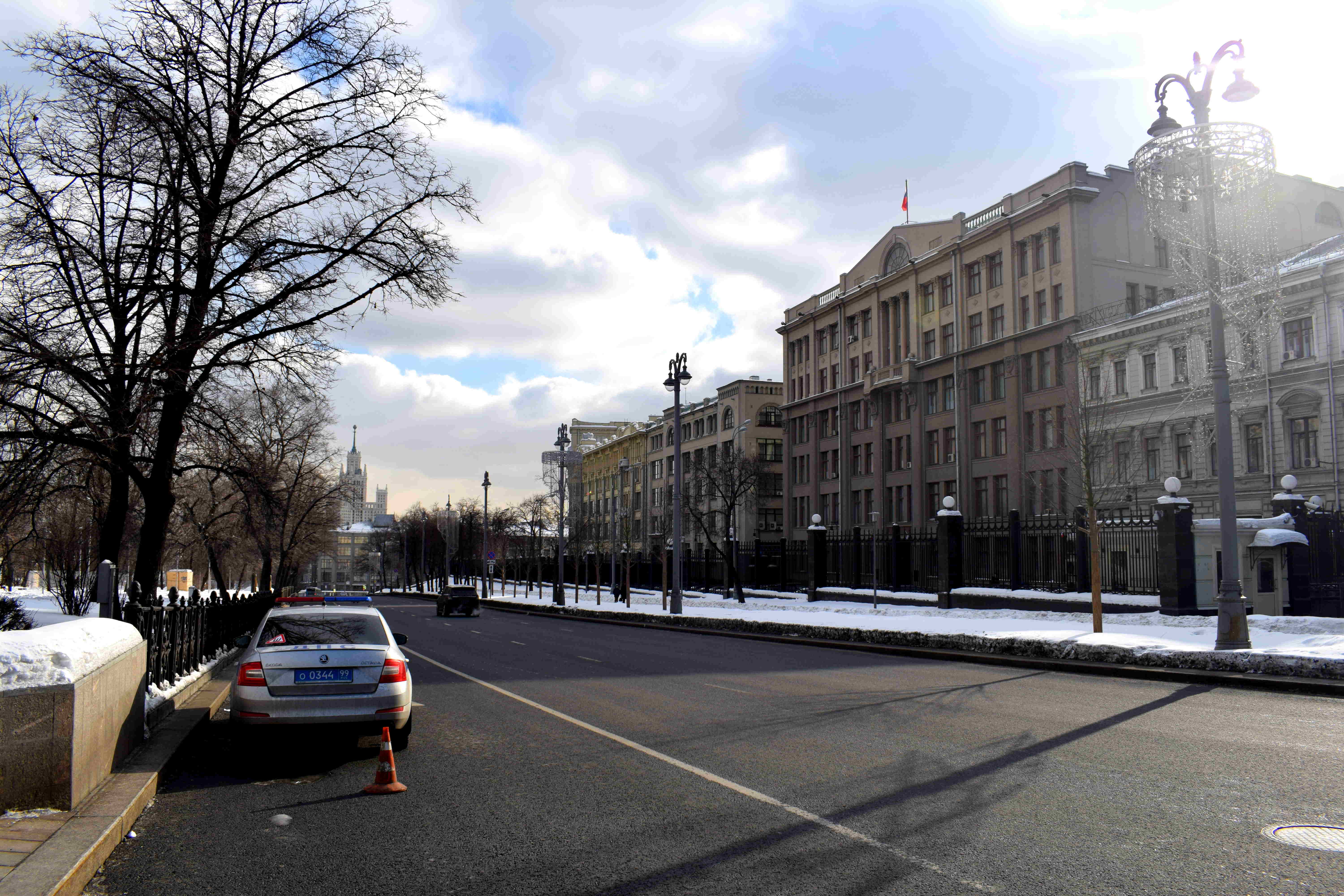
One of the biggest problems in Moscow is that the historical core of the city has four to five lane highways running through it. These wide roads were built by the communists. Often they razed down smaller historical buildings to expand the streets. Regular crosswalks are few and far between. Pedestrians are forced to cross the street using underground passageways that go underneath the big roads.
This makes walking around the center extremely difficult for older folks, women with babies and don’t even think about going for a walk if you are disabled or in a wheelchair. It also discourages the development of a robust cycling culture, since in many places the only way for a cyclist to cross the street is to get off their bike and use an underground passage.
Much of the center looks like this. Simply a four lane highway.
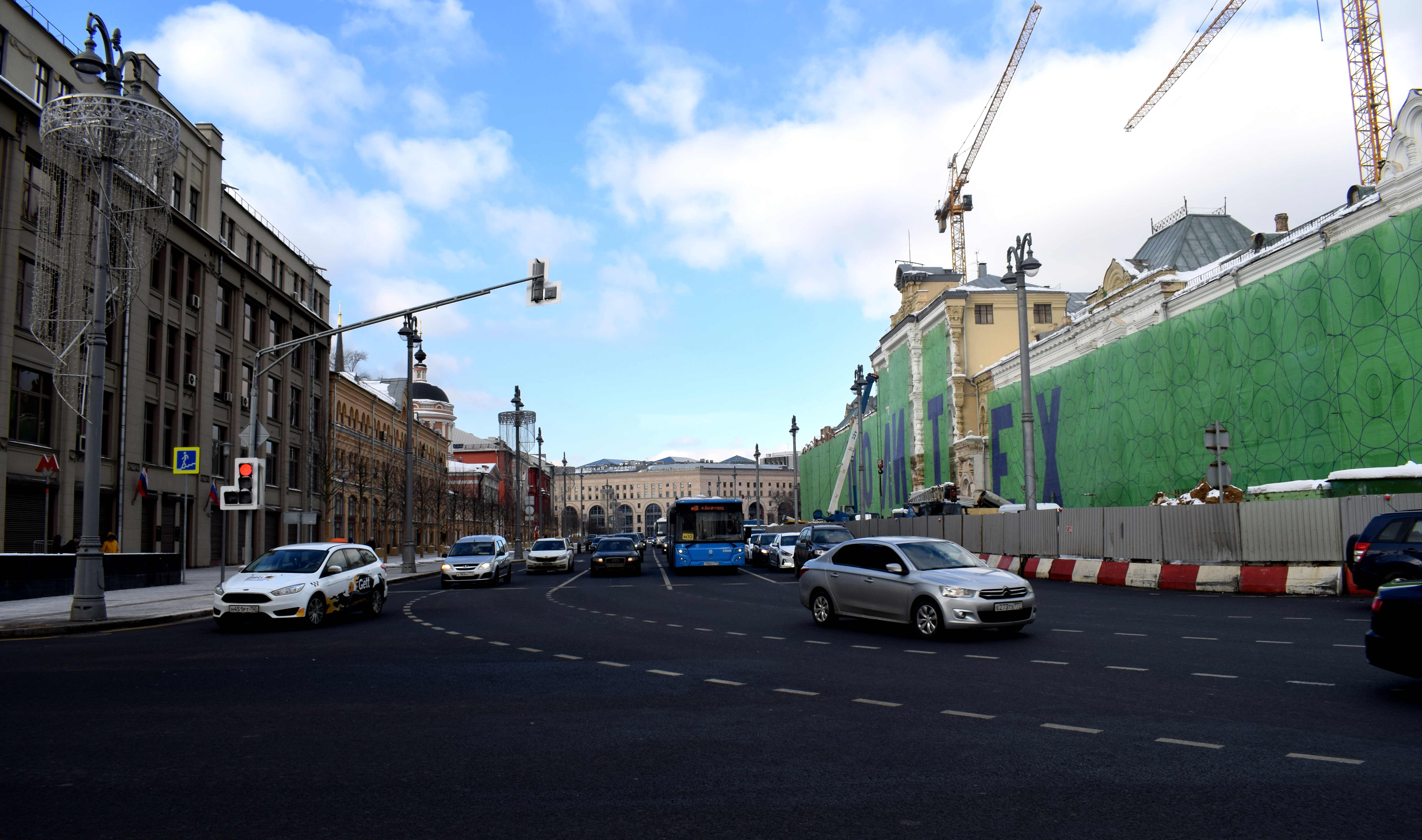 Before the Bolshevik Revolution Moscow was like any other European city with small narrow cobble-stoned streets and trams. After the revolution the communists tore down old buildings, widened the roads and destroyed the picturesque nature of the city.
Before the Bolshevik Revolution Moscow was like any other European city with small narrow cobble-stoned streets and trams. After the revolution the communists tore down old buildings, widened the roads and destroyed the picturesque nature of the city.
There are few areas of Moscow that retain the atmosphere of what the old Moscow was like before the revolution. But one of those places is Kitai Gorod. Here is Ilitsa Street in Kitai Gorod. The streets here are narrow, there is little traffic and the buildings retain their old 19th century neoclassical style that one can find in the rest of Europe.
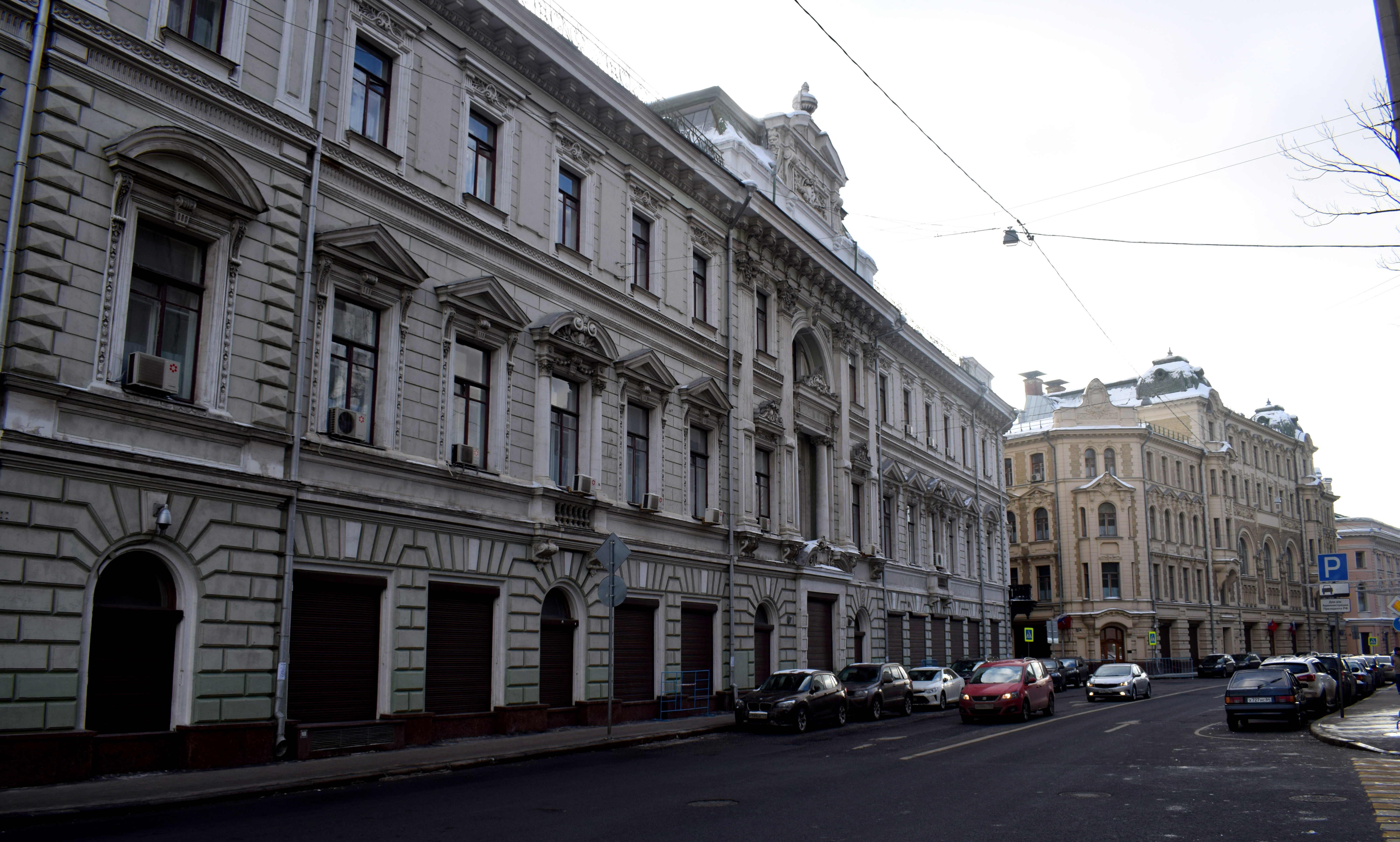 This area would be a perfect part of Moscow for the city to completely pedestrianize and turn into a full-fledged pedestrian zone. Here’s what walking down the street was like in the early 20th century.
This area would be a perfect part of Moscow for the city to completely pedestrianize and turn into a full-fledged pedestrian zone. Here’s what walking down the street was like in the early 20th century.
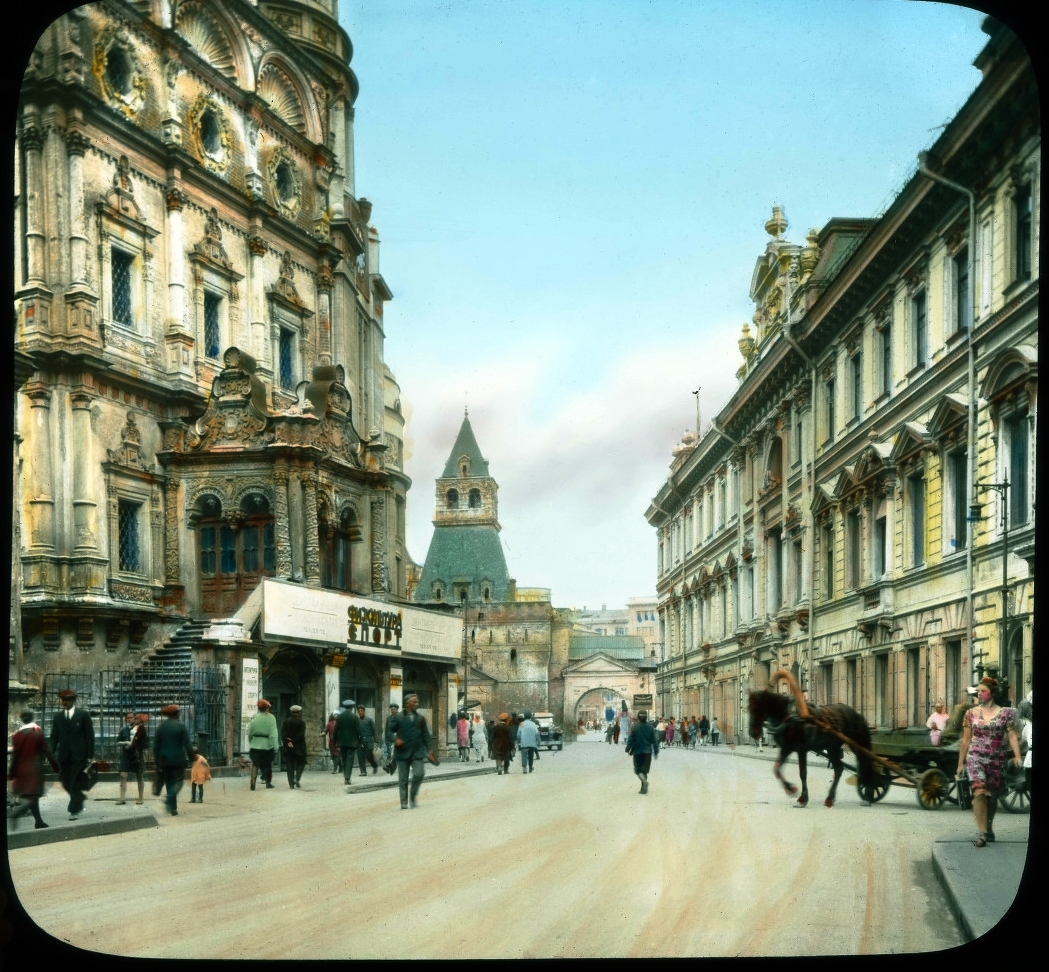 And here’s that area now. Gone are the pedestrians. It’s just an empty area in the heart of Moscow right next to Red Square.
And here’s that area now. Gone are the pedestrians. It’s just an empty area in the heart of Moscow right next to Red Square.
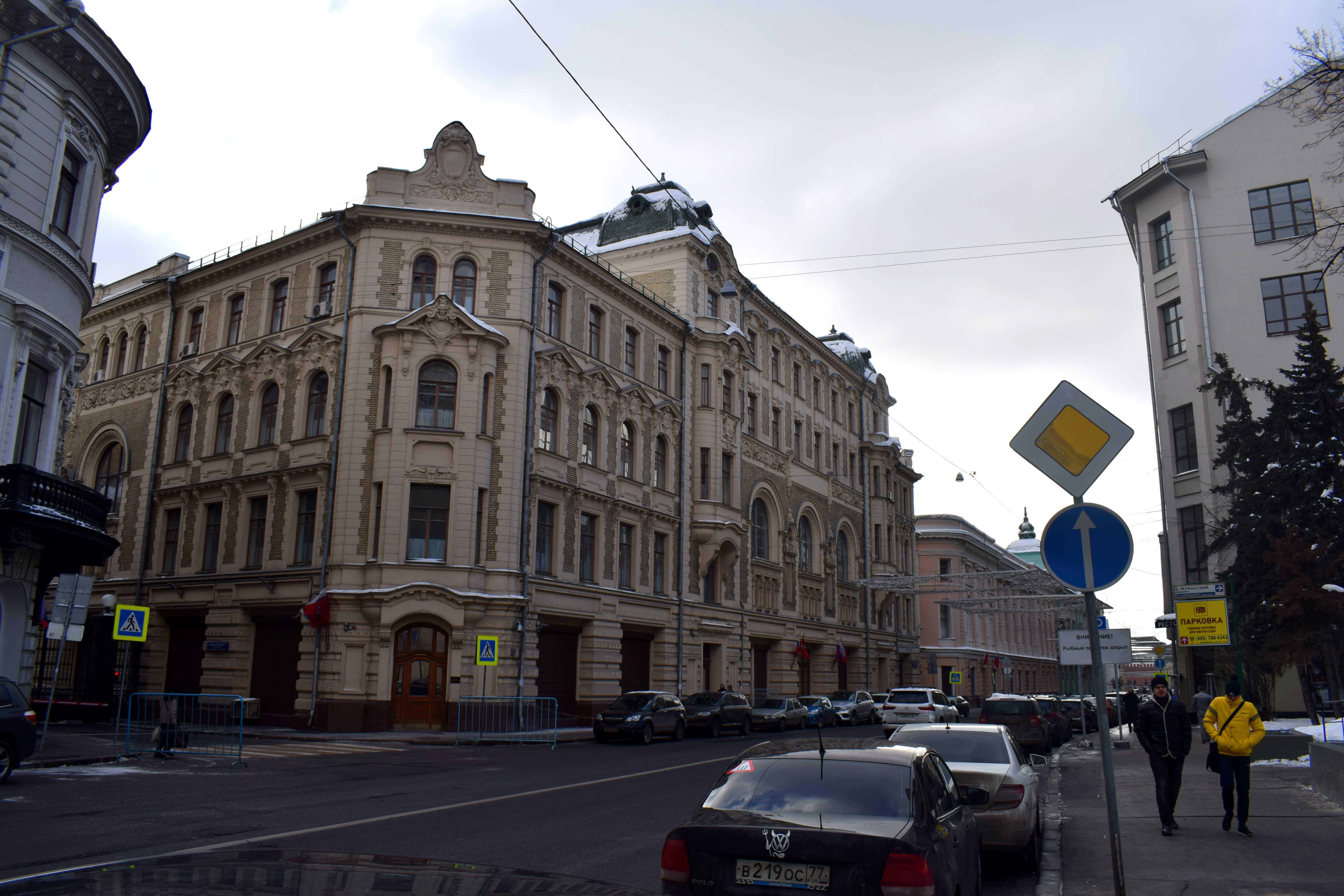
Just imagine if the street below were to be completely pedestrianized. Just as neighboring Nikolskaya Street has been pedestrianized leading to the Kremlin, Ilitsa street could be pedestrianized in the same way. Countless examples around the world have shown how pedestrianized central streets in a city lead to business flourishing and a revival in activity. We have seen Bucharest pedestrianize its center and bars and cafes move in to create a bustling vibrant center. Perhaps the best example of a city pedestrianizing its center is Ljubljana which has been deemed the green capital of Europe because it shut off its entire historic center to cars.
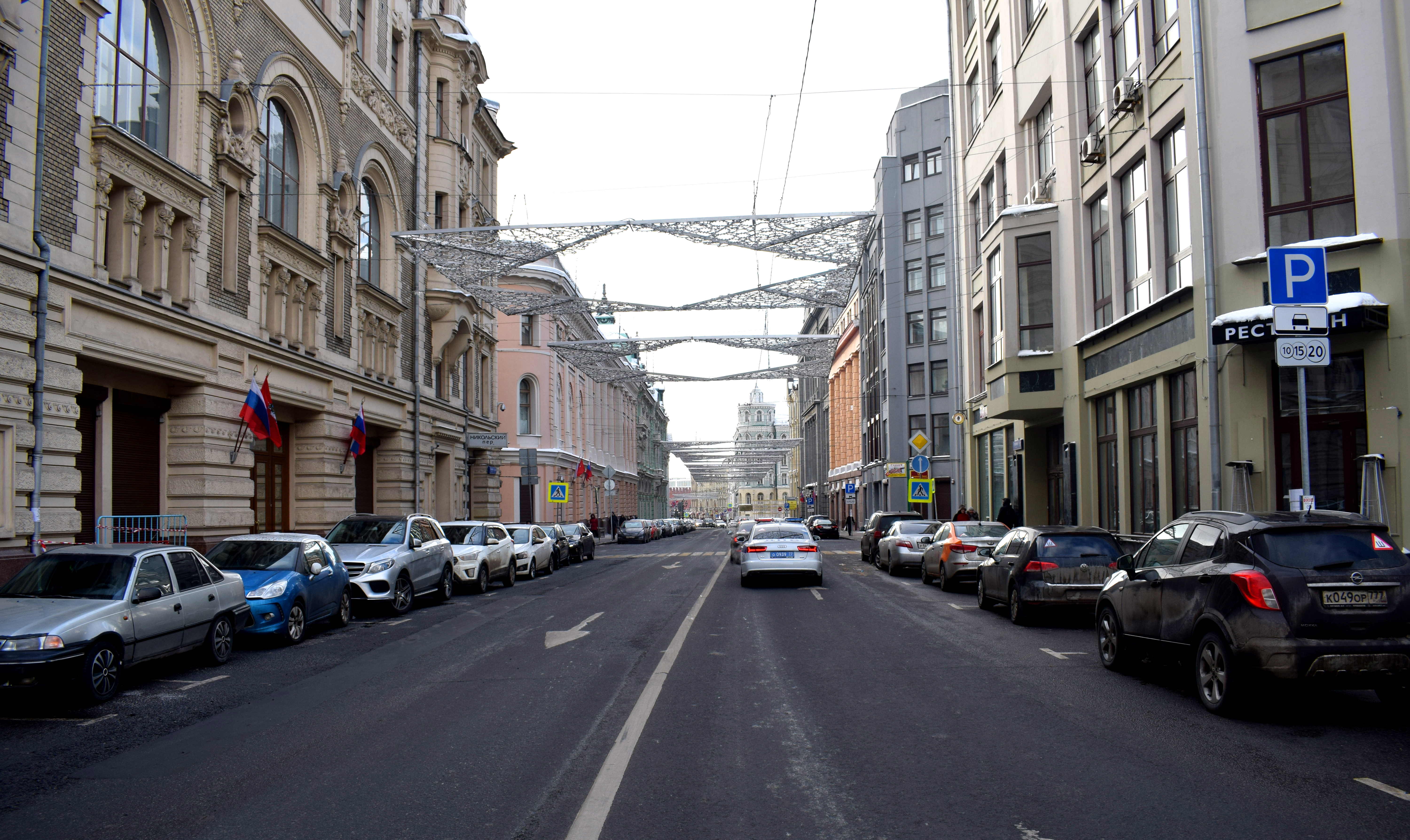 Take a look at Ilitsa Street in Kitai Gorod in 1909. A beautiful cobble-stoned street, small local shops, pedestrians walking around. A true vibrant European city.
Take a look at Ilitsa Street in Kitai Gorod in 1909. A beautiful cobble-stoned street, small local shops, pedestrians walking around. A true vibrant European city.
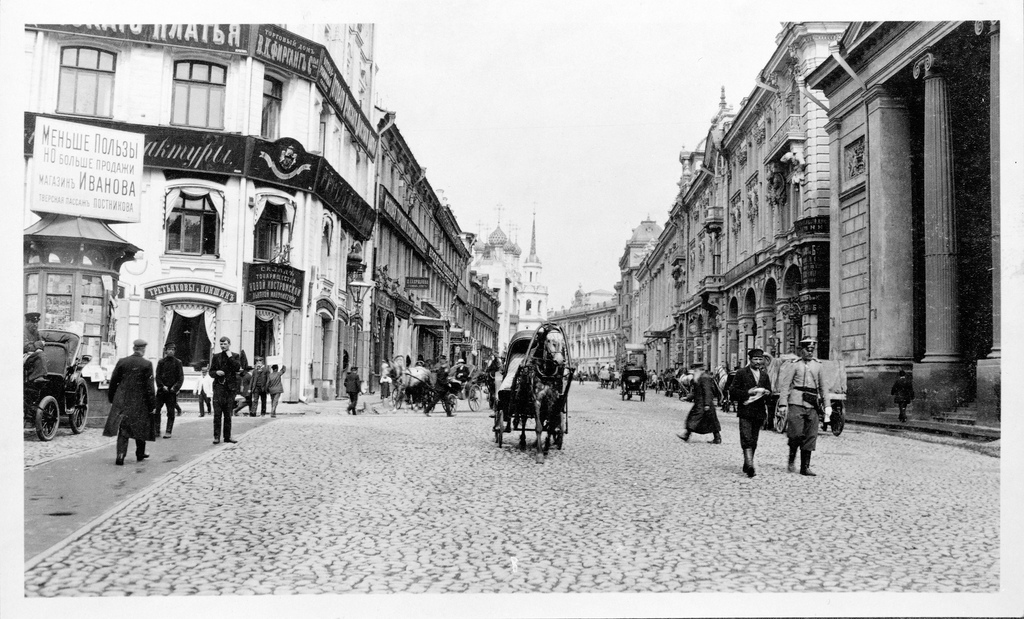 That same street in 2018. The beautiful buildings still remain. Unfortunately the cobble-stones were taken out sometime during the 20th century and replaced with modern pavement.
That same street in 2018. The beautiful buildings still remain. Unfortunately the cobble-stones were taken out sometime during the 20th century and replaced with modern pavement.
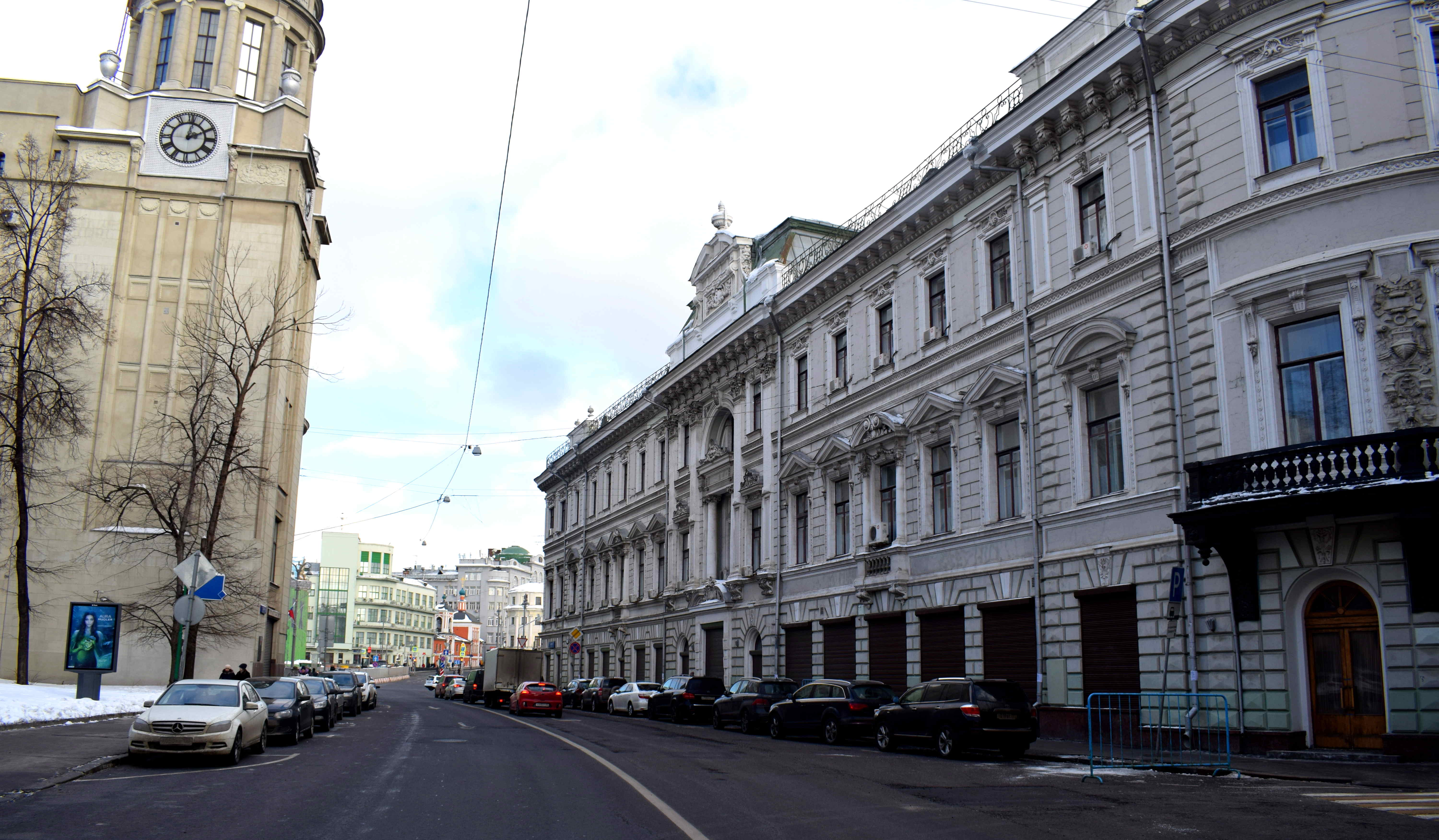 The best European cities today are those that have banned cars from their centers cut off for cars and where people can walk freely without worrying listening to the constant sound of cars driving by and where the buildings are all old from the 19th or 18th centuries or even earlier. Lvov is a perfect example of such a city in Ukraine. There are countless others.
The best European cities today are those that have banned cars from their centers cut off for cars and where people can walk freely without worrying listening to the constant sound of cars driving by and where the buildings are all old from the 19th or 18th centuries or even earlier. Lvov is a perfect example of such a city in Ukraine. There are countless others.
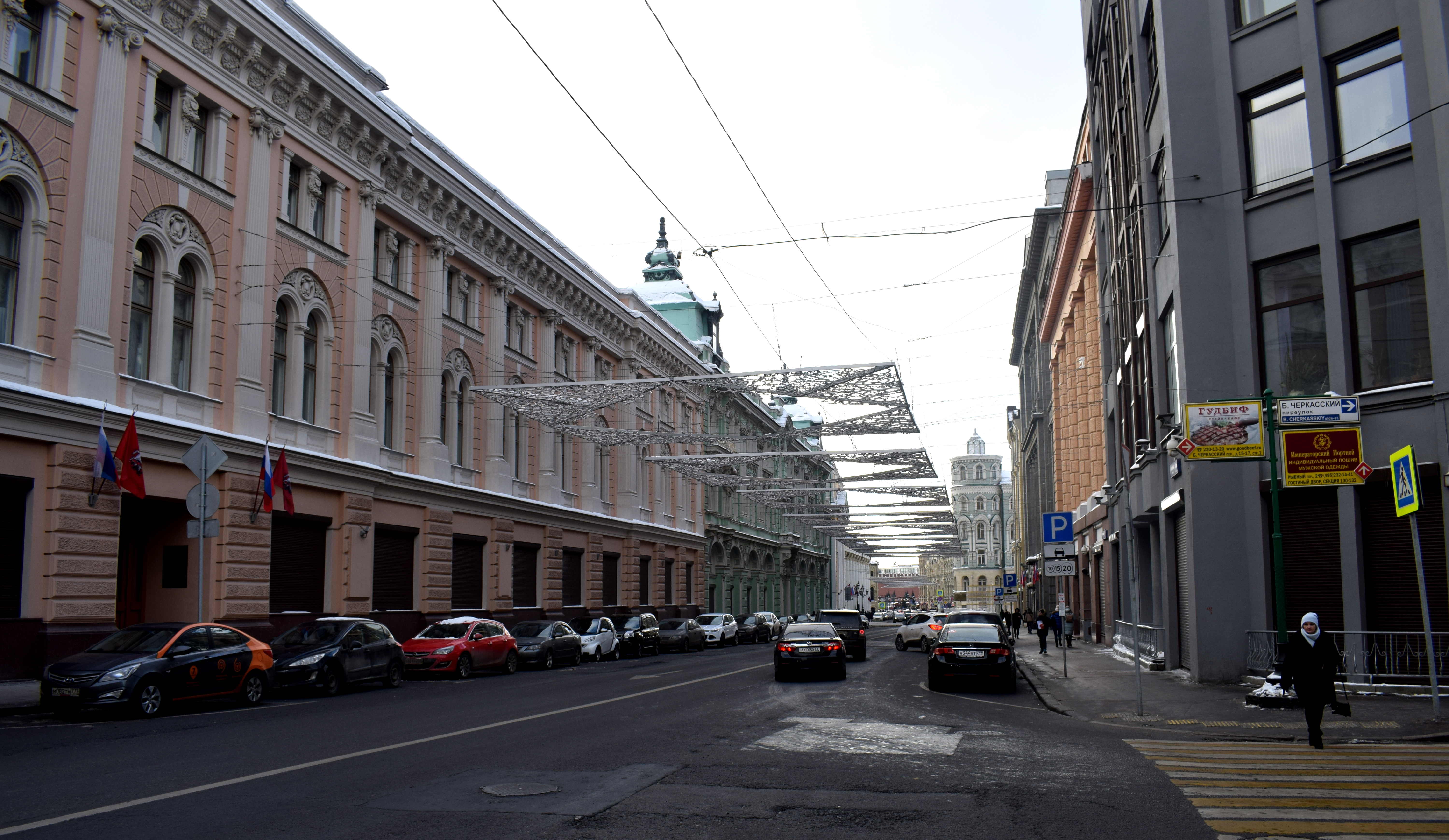 Although Moscow has lost much over the course of the 20th century, there is still hope to save the city. The government should embark on turning all of Kitai Gorod into a pedestrian zone. The area between Red Square and where today’s Kitai Gorod Metro Station lies is a perfect area that could be pedestrianized. There is little traffic, the streets are narrow, and in many places the area has simply been turned into a parking lot.
Although Moscow has lost much over the course of the 20th century, there is still hope to save the city. The government should embark on turning all of Kitai Gorod into a pedestrian zone. The area between Red Square and where today’s Kitai Gorod Metro Station lies is a perfect area that could be pedestrianized. There is little traffic, the streets are narrow, and in many places the area has simply been turned into a parking lot.
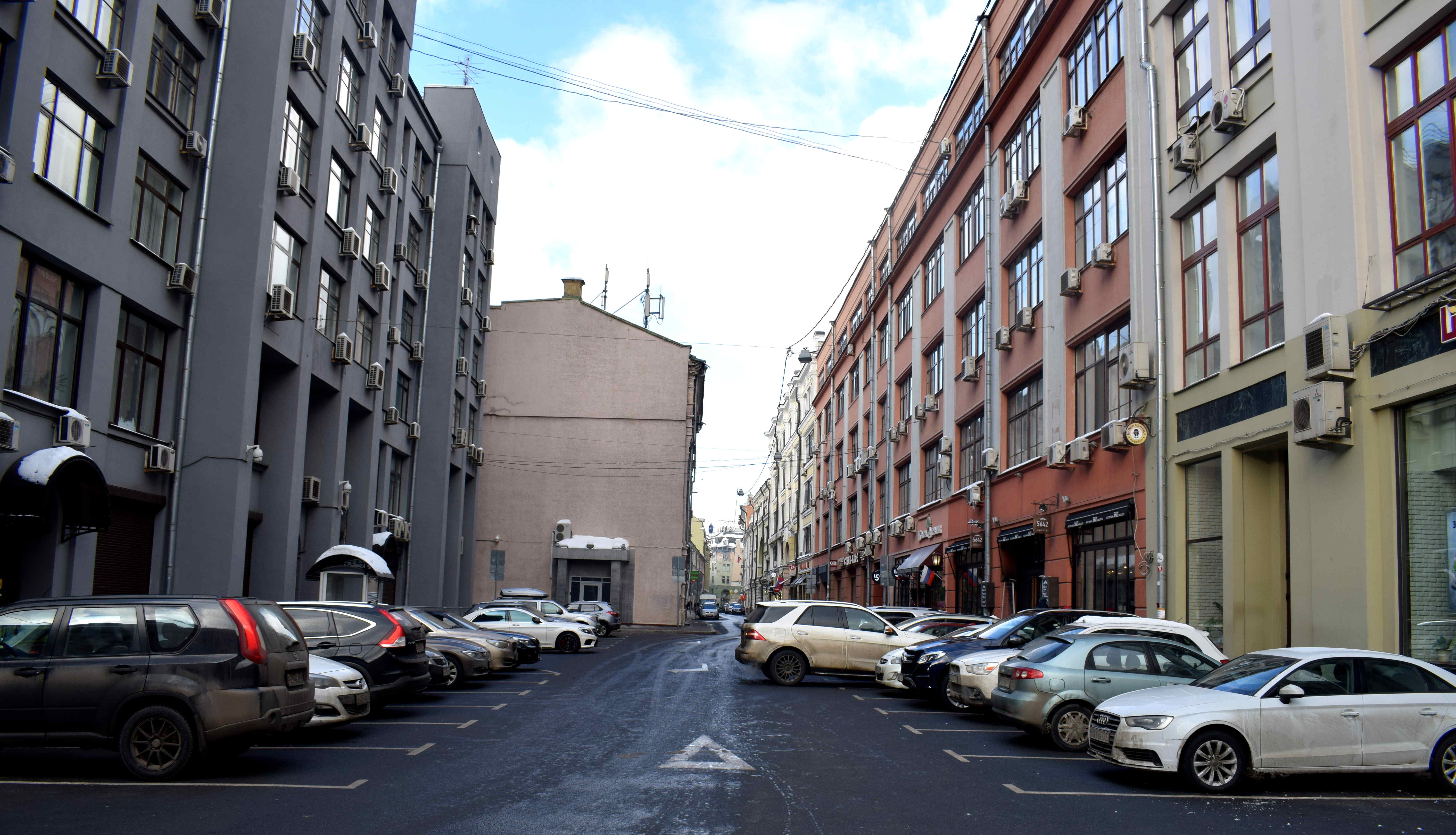 The city is already making some good progress in pedestrianizing this area. They have turned the street that leads to the newly built Zaryade Park into a pedestrian zone. And as mentioned earlier, Nikolskaya Street has been turned into a full-fledged pedestrian street.
The city is already making some good progress in pedestrianizing this area. They have turned the street that leads to the newly built Zaryade Park into a pedestrian zone. And as mentioned earlier, Nikolskaya Street has been turned into a full-fledged pedestrian street.
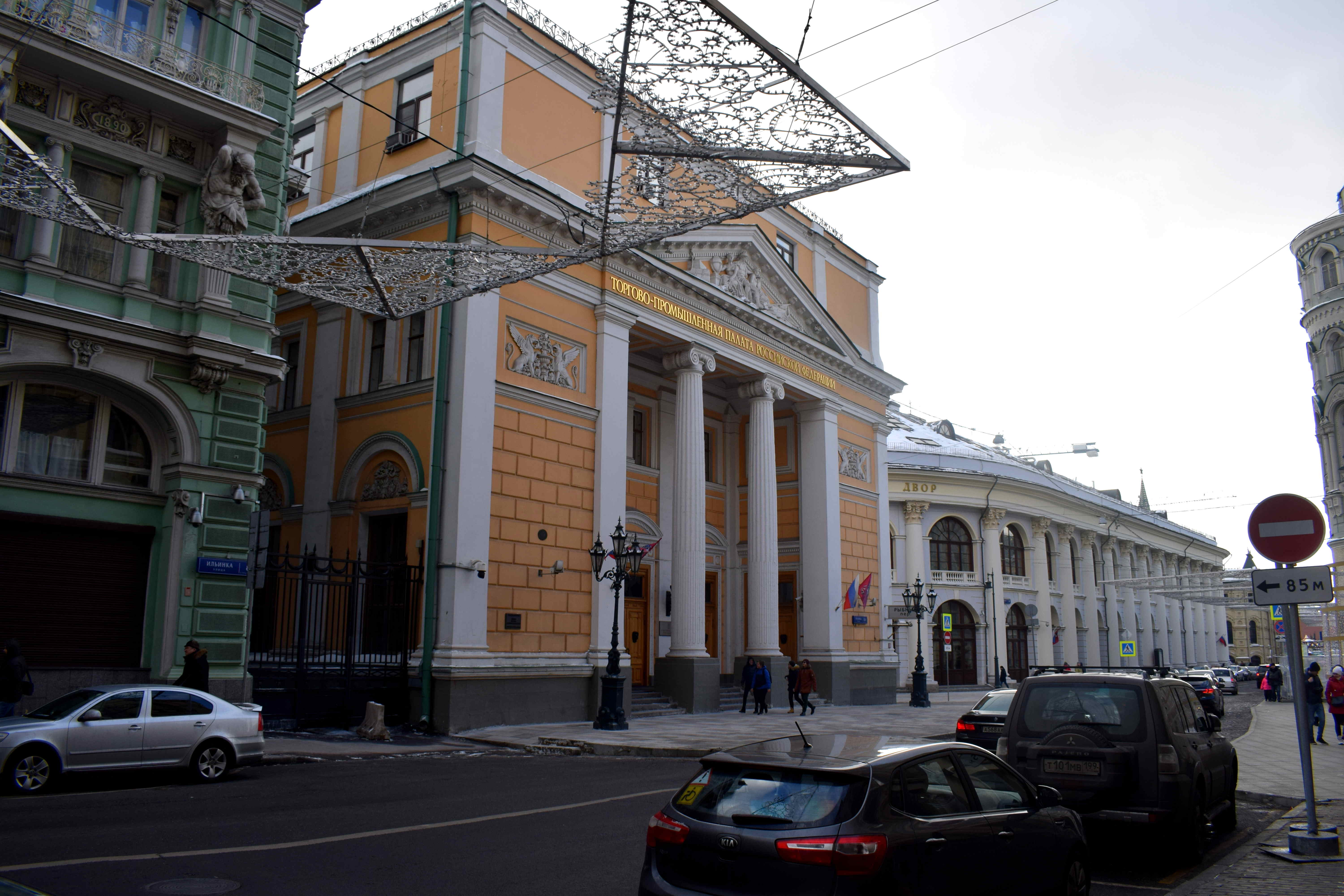 The rest of Kitai Gorod could easily follow.
The rest of Kitai Gorod could easily follow.
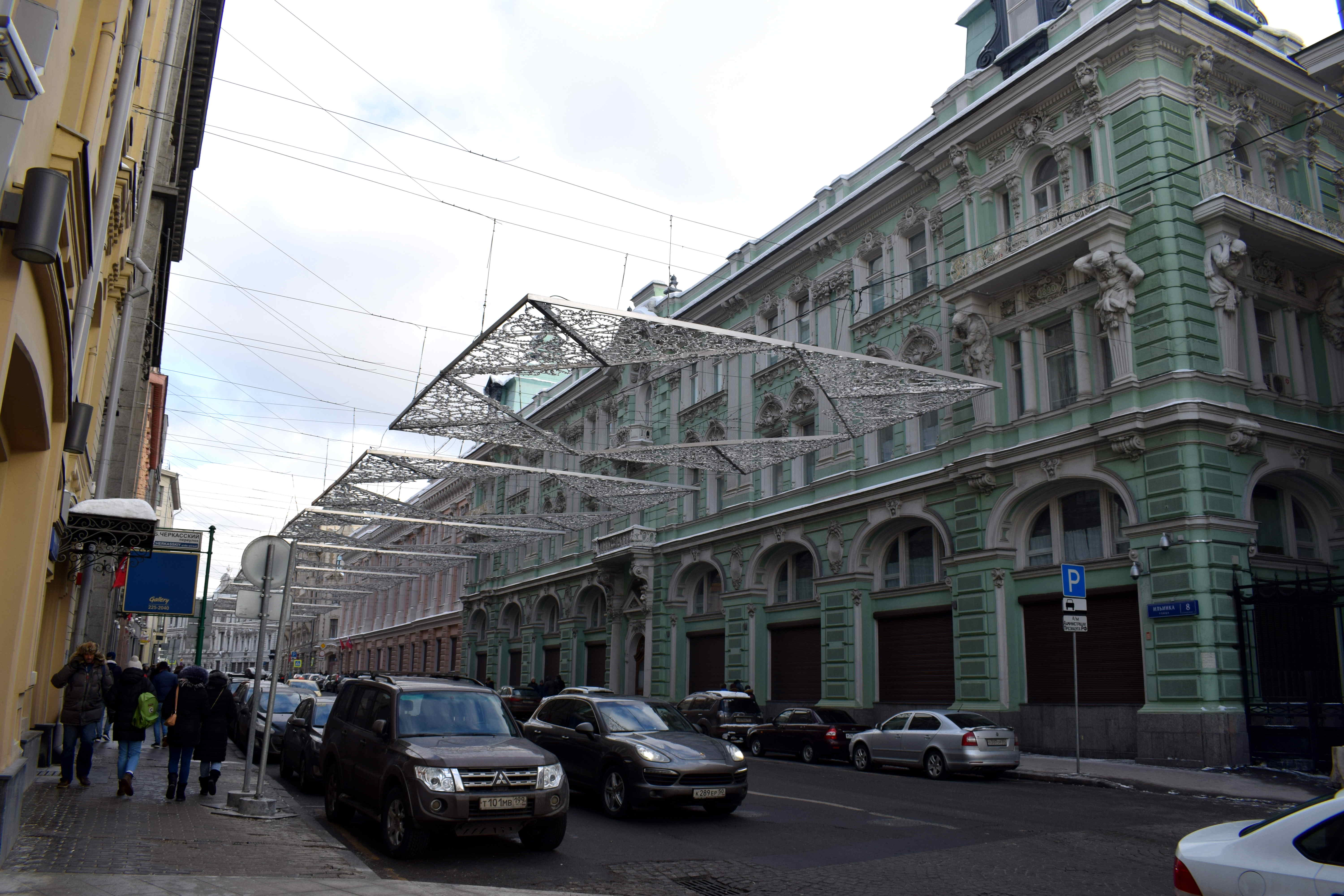 The building of the Russian Chamber of Commerce, built in 1873-1875.
The building of the Russian Chamber of Commerce, built in 1873-1875.
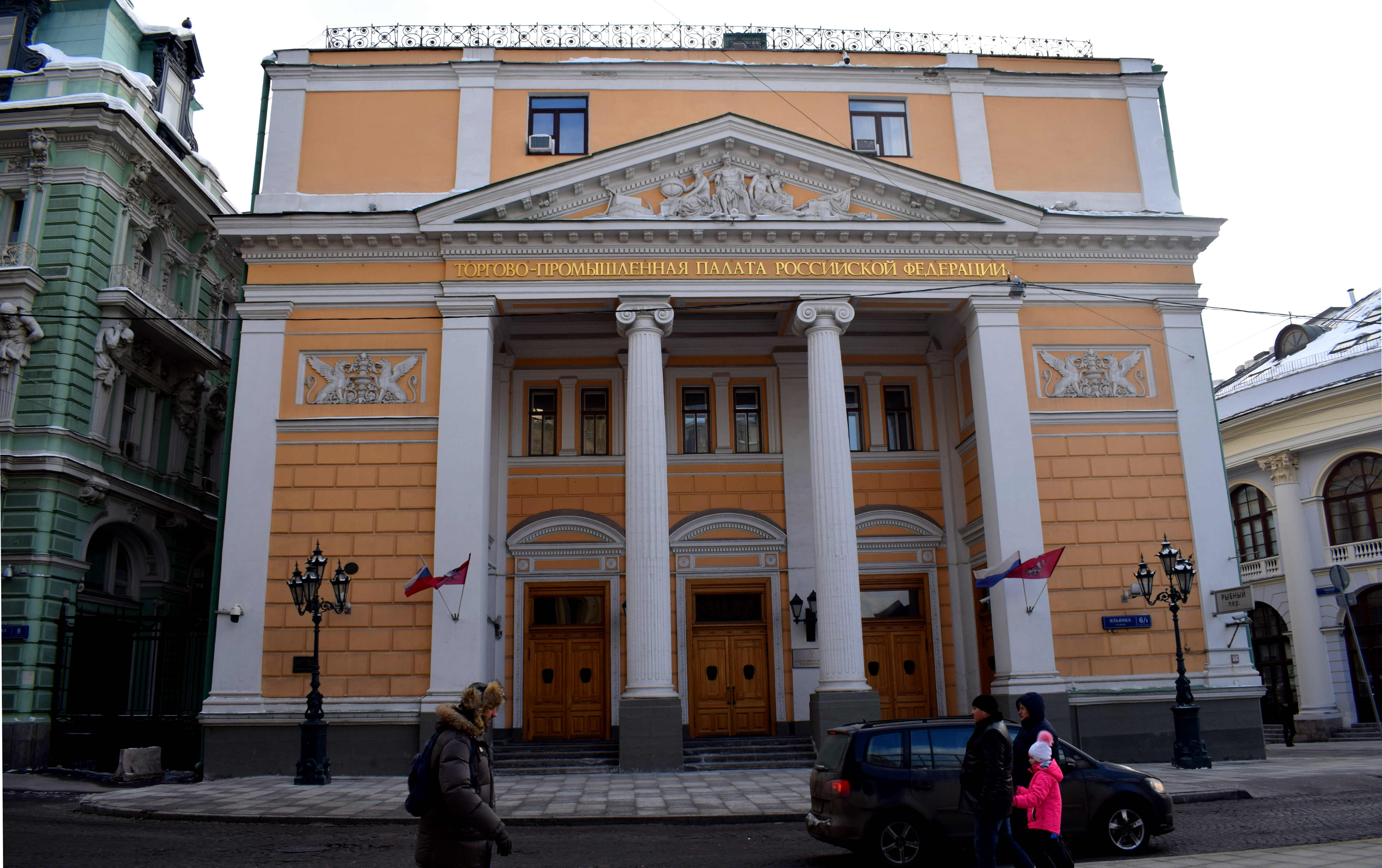 Here’s the building in 1902.
Here’s the building in 1902.
Another famous building on Ilitsa Street is Gostiny Dvor, built in 1905. Gostiny Dvor served as an exhibition hall when it was initially built. But during Soviet times the building was turned into an administrative building, which distinguished it from the neighboring GUM building which remained a shopping mall. From 1995-2000 the building went through a massive reconstruction which saw much of its interior significantly changed. An additional floor was constructed on top of the building while the southern wing of the building had two floors added to it which blocked the view to St. Basil’s Cathedral. There were plans to turn the building into a hotel after the building’s reconstruction, but they were never implemented. Today the building is used as an exhibition hall.
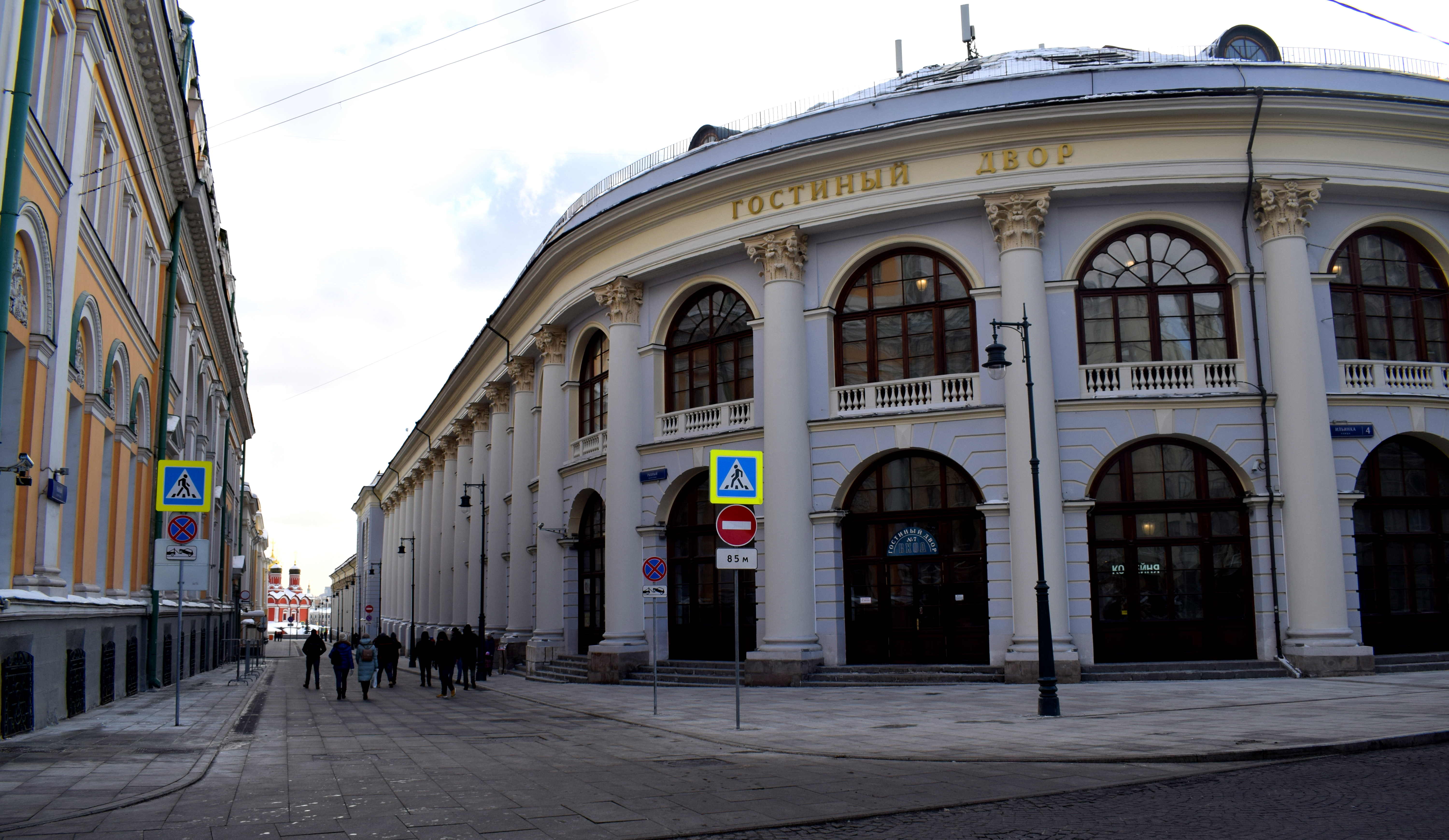 Another look back on Ilitsa Street. This is the street which should be pedestrianized.
Another look back on Ilitsa Street. This is the street which should be pedestrianized.
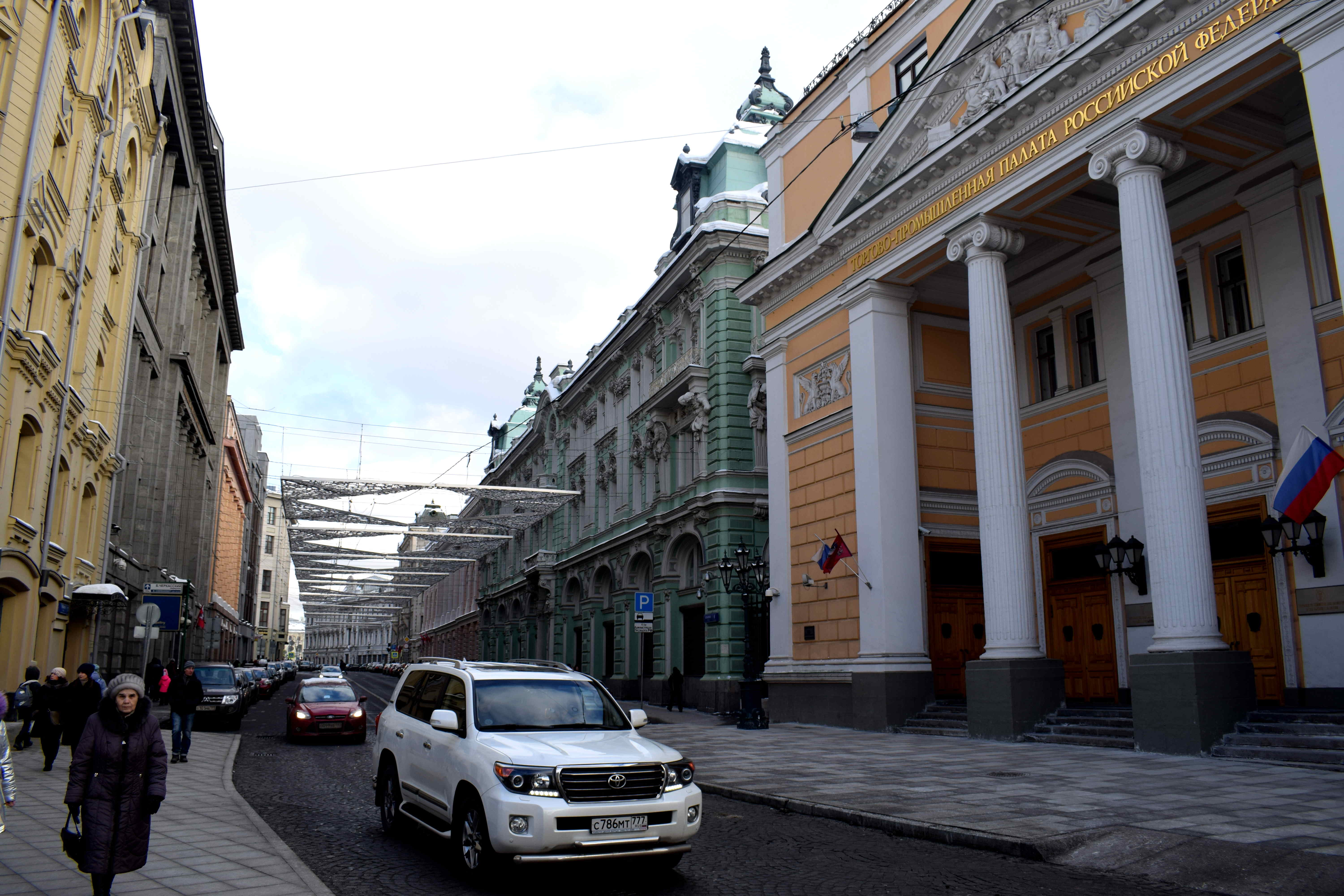 Fortunately, the city is moving in this direction. Here is a recently pedestrianized square where you can see the Russian Chamber of Commerce on the left and Gostiny Dvor on the right. But in order to make this pedestrian street truly work, the city will have to add more benches, a fountain and open the buildings up for cafes and restaurants.
Fortunately, the city is moving in this direction. Here is a recently pedestrianized square where you can see the Russian Chamber of Commerce on the left and Gostiny Dvor on the right. But in order to make this pedestrian street truly work, the city will have to add more benches, a fountain and open the buildings up for cafes and restaurants.
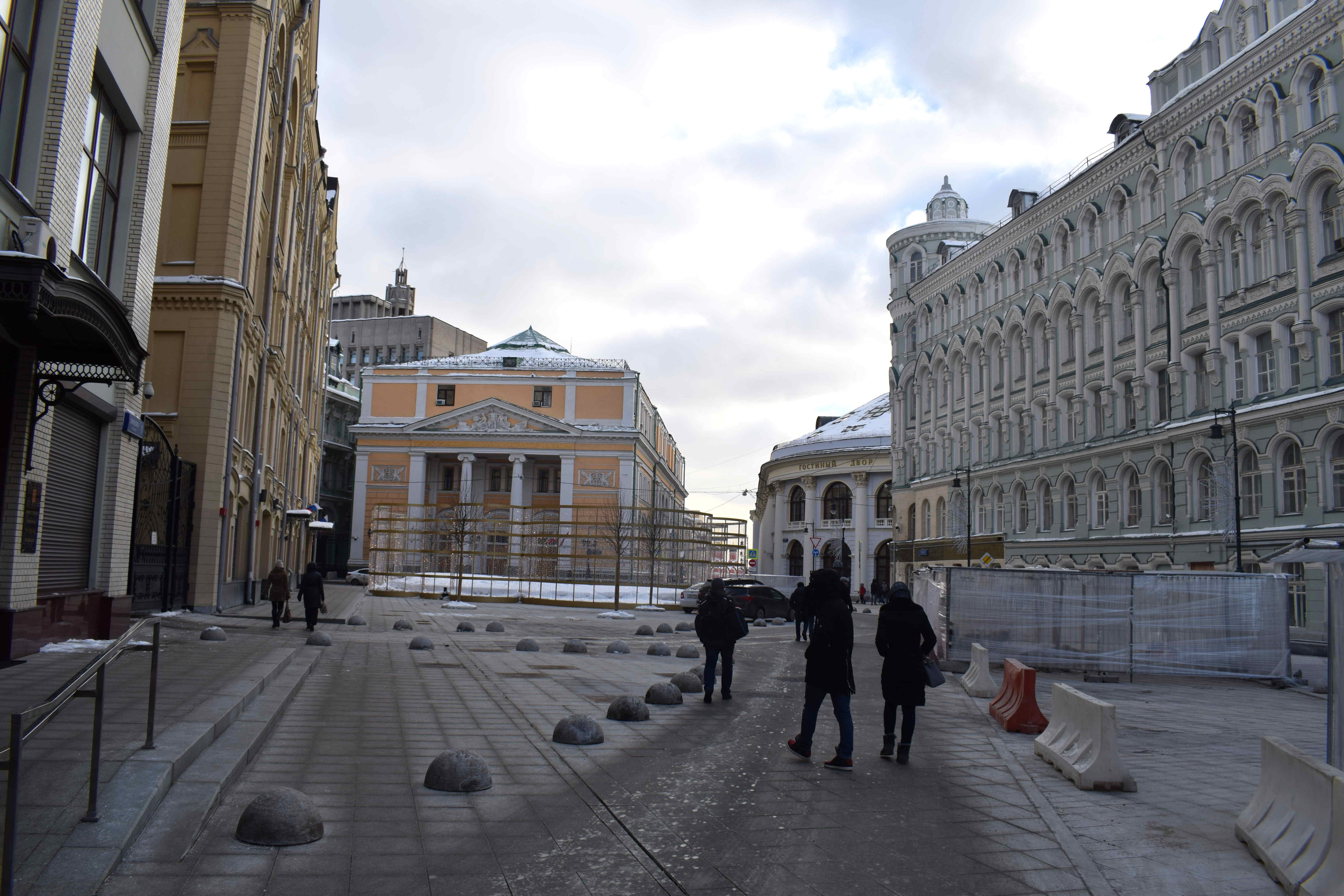 The same square in 1886. Much of these buildings have been lost.
The same square in 1886. Much of these buildings have been lost.
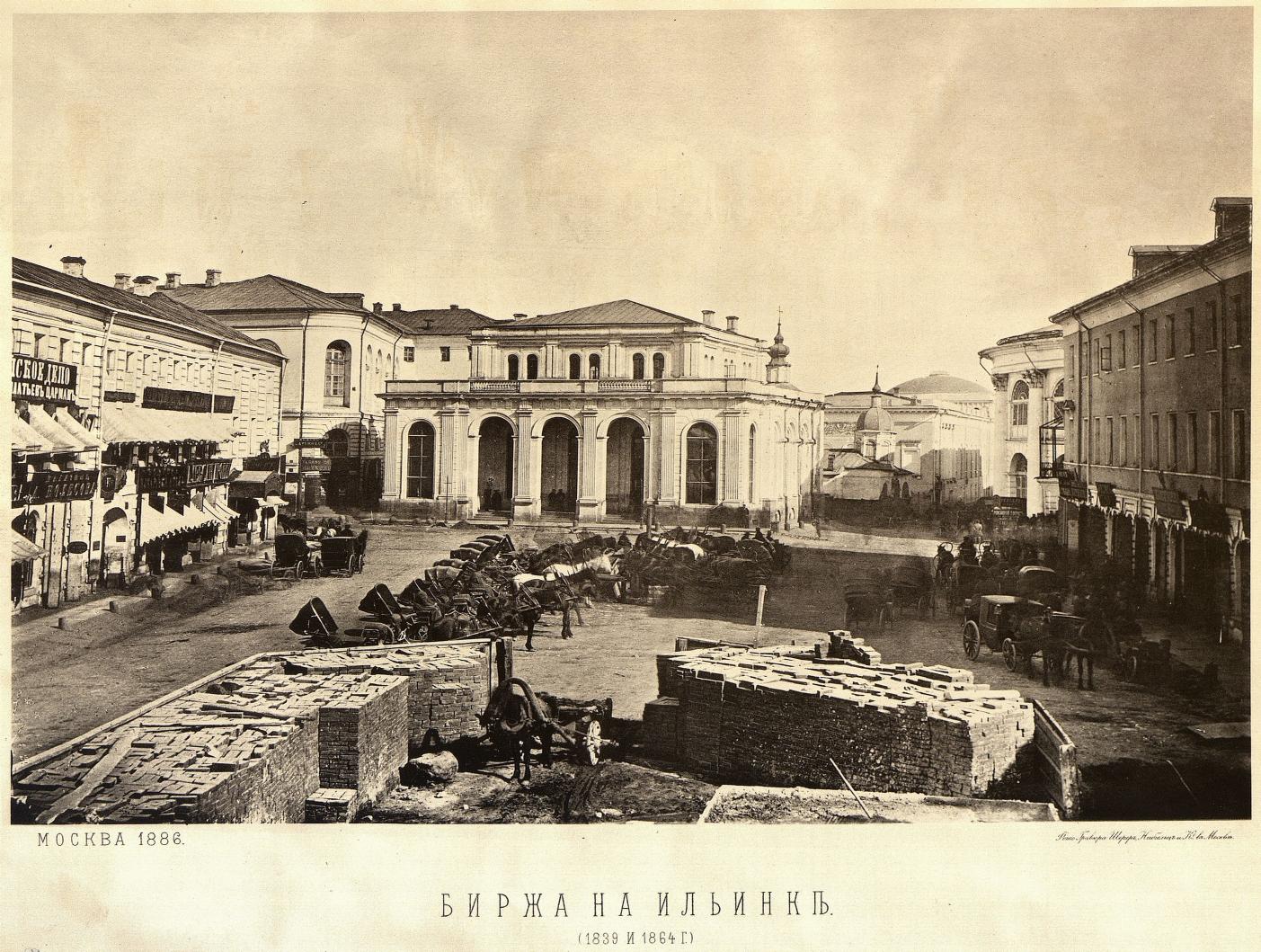 Another one of the side streets which should be pedestrianized. Right now this is simply a dead street in the middle of the city. All it serves for is a narrow alley where you can park your car and then visit the Kremlin. Instead what the city should do is simply turn it into a pedestrian street and allow the buildings on the left to be turned into cafes or restaurants.
Another one of the side streets which should be pedestrianized. Right now this is simply a dead street in the middle of the city. All it serves for is a narrow alley where you can park your car and then visit the Kremlin. Instead what the city should do is simply turn it into a pedestrian street and allow the buildings on the left to be turned into cafes or restaurants.
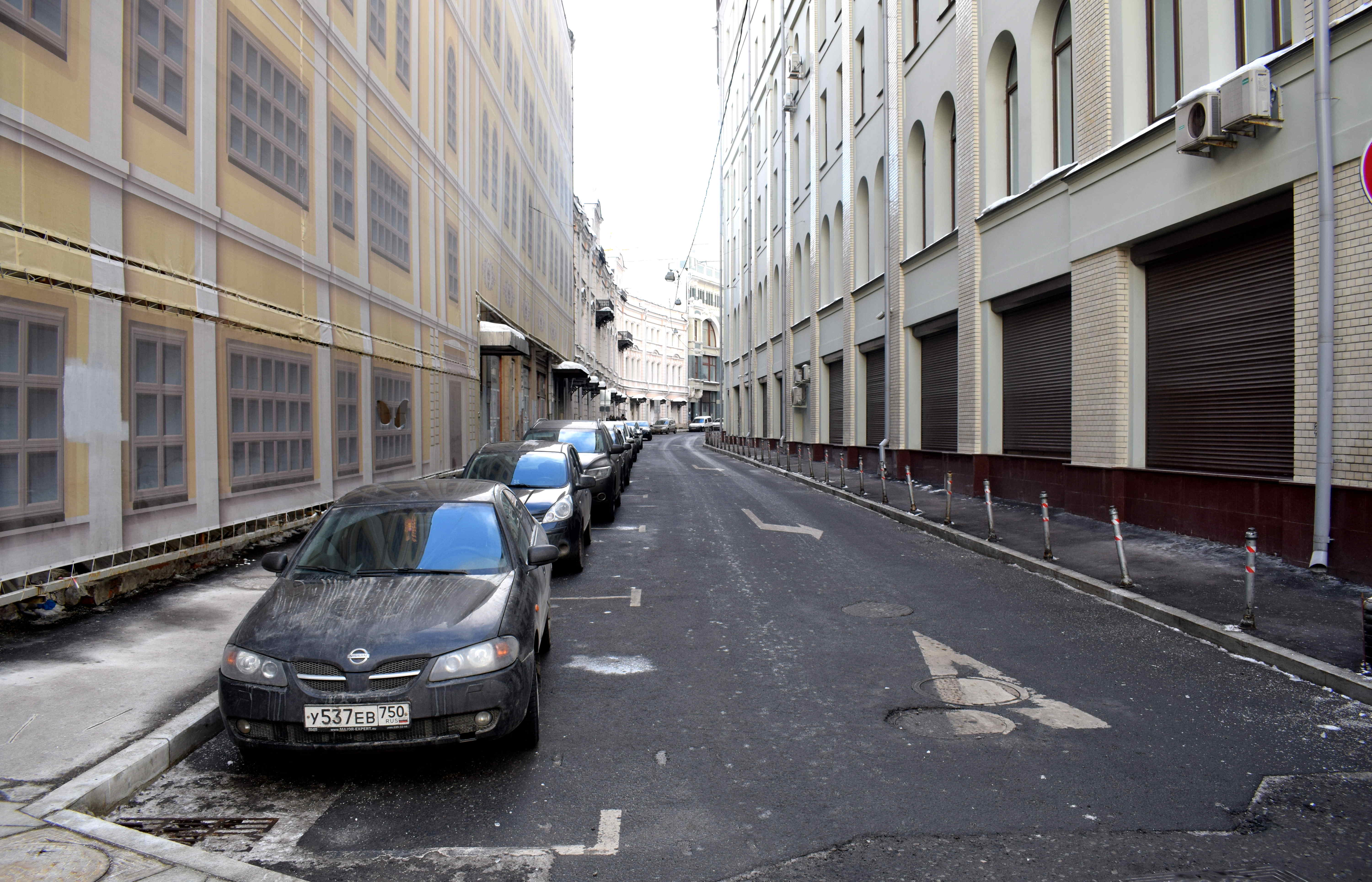
Moscow has thankfully already started doing so. Here is recently pedestrianized Bogoyavlensky Pereulok, which connects Ilitsa Street to Nikolskaya Street. The work obviously hasn’t yet finished. The side buildings still need to be renovated and park benches added. And then hopefully this will become another vibrant part of the city center.
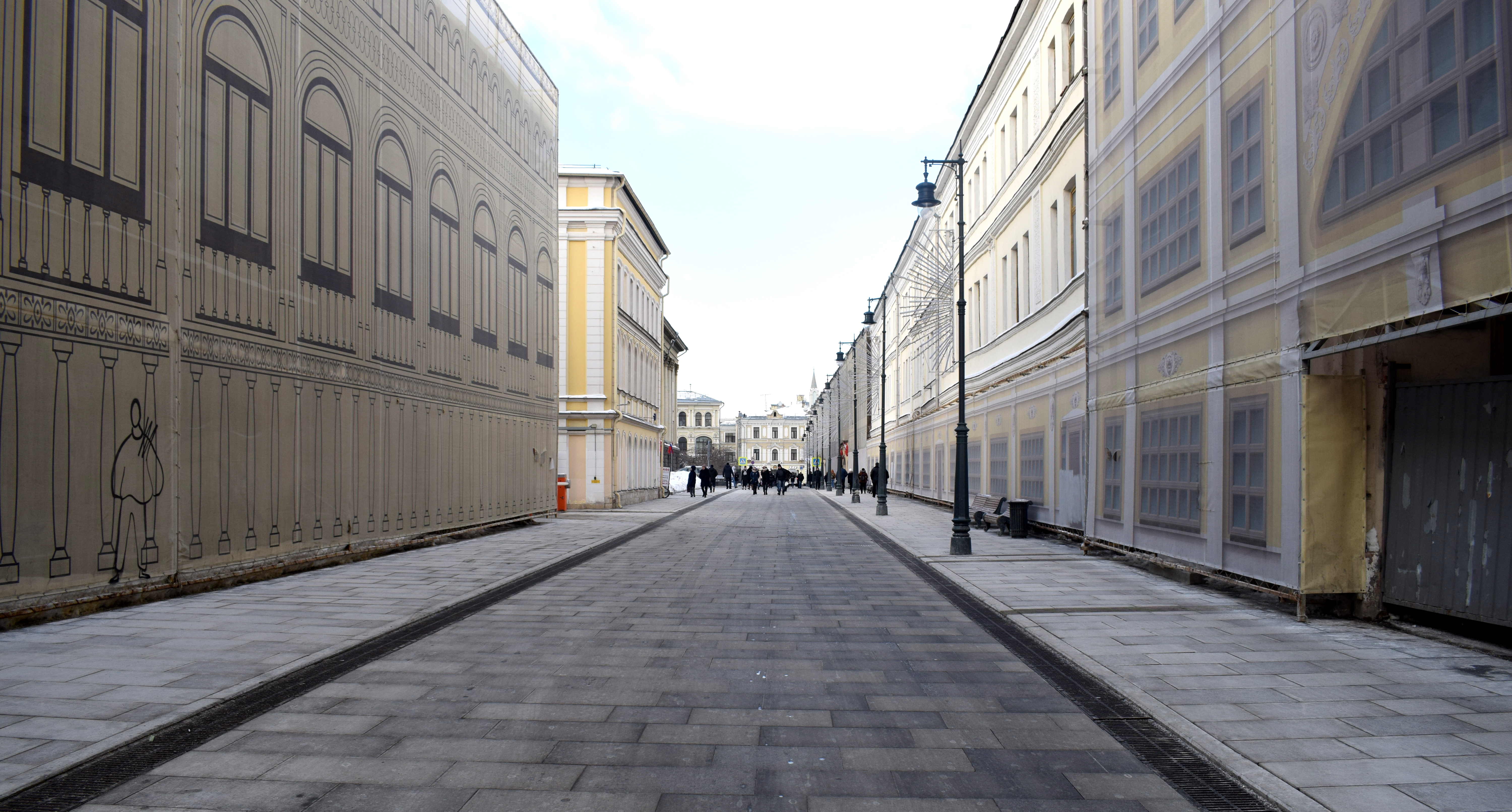 This is an old picture of Bogoyavlensky Pereulok in the early 20th century. It’s a shame Moscow didn’t bring back the cobblestones, but at least this is a step in the right direction.
This is an old picture of Bogoyavlensky Pereulok in the early 20th century. It’s a shame Moscow didn’t bring back the cobblestones, but at least this is a step in the right direction.
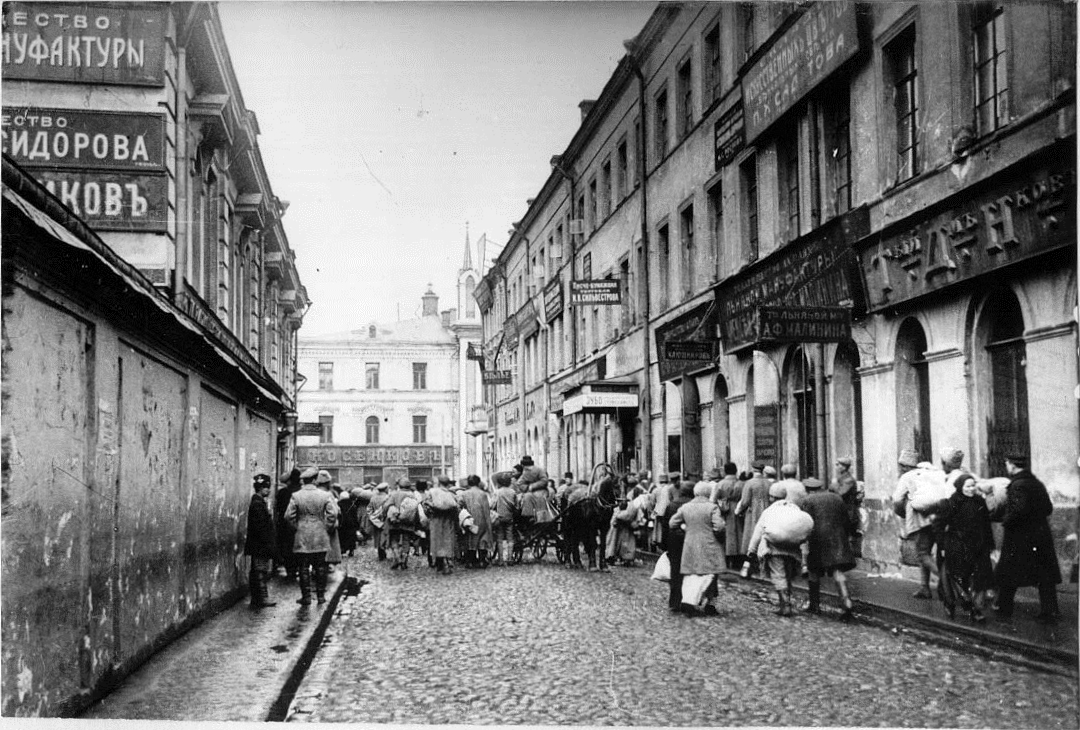 The Epiphany Monastery, the oldest male monastery in Moscow. Legend has it that a church has existed in this spot since 1296. The first stone church was built here in 1342. In subsequent centuries the monastery survived several fires. The building took the shape it holds today in 1696 and is a classic example of Russian Baroque Style. When the Bolsheviks came to power they shut the church down and the church’s bells were torn down at the end of the 1920’s. The building was damaged in a German bombing raid during WWII. After the war during Soviet times the area around the main church building was used to house students. It was not until the mid 1980’s that reconstruction efforts began.
The Epiphany Monastery, the oldest male monastery in Moscow. Legend has it that a church has existed in this spot since 1296. The first stone church was built here in 1342. In subsequent centuries the monastery survived several fires. The building took the shape it holds today in 1696 and is a classic example of Russian Baroque Style. When the Bolsheviks came to power they shut the church down and the church’s bells were torn down at the end of the 1920’s. The building was damaged in a German bombing raid during WWII. After the war during Soviet times the area around the main church building was used to house students. It was not until the mid 1980’s that reconstruction efforts began.
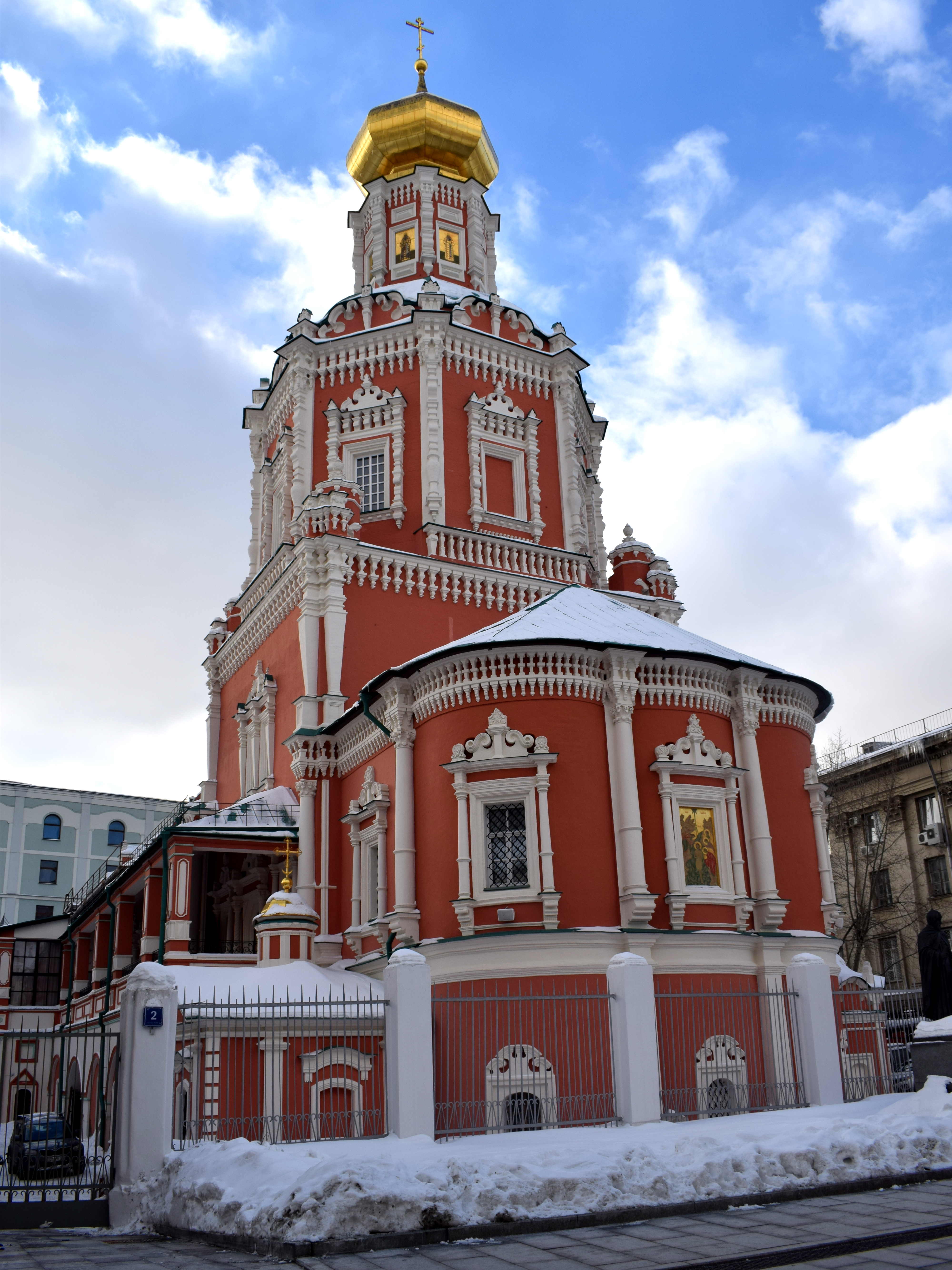 More photos of Bogoyavlensky Pereulok.
More photos of Bogoyavlensky Pereulok.
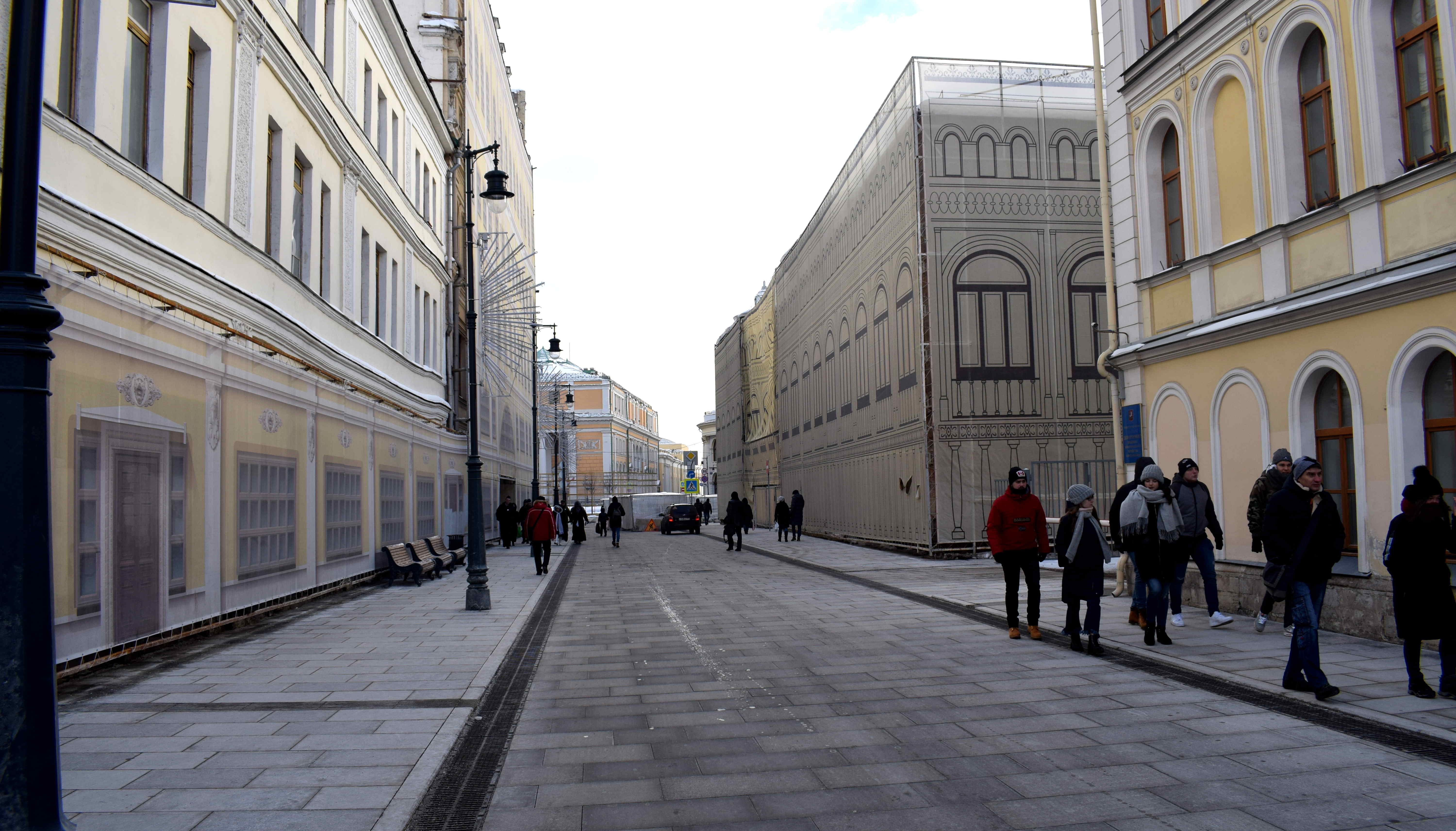 You can enter into one of the side streets and you end up in what could be a beautiful square in the center of the city. Most likely this is what it used to be in the early 19th century, but decades of misuse has left it abandoned.
You can enter into one of the side streets and you end up in what could be a beautiful square in the center of the city. Most likely this is what it used to be in the early 19th century, but decades of misuse has left it abandoned.
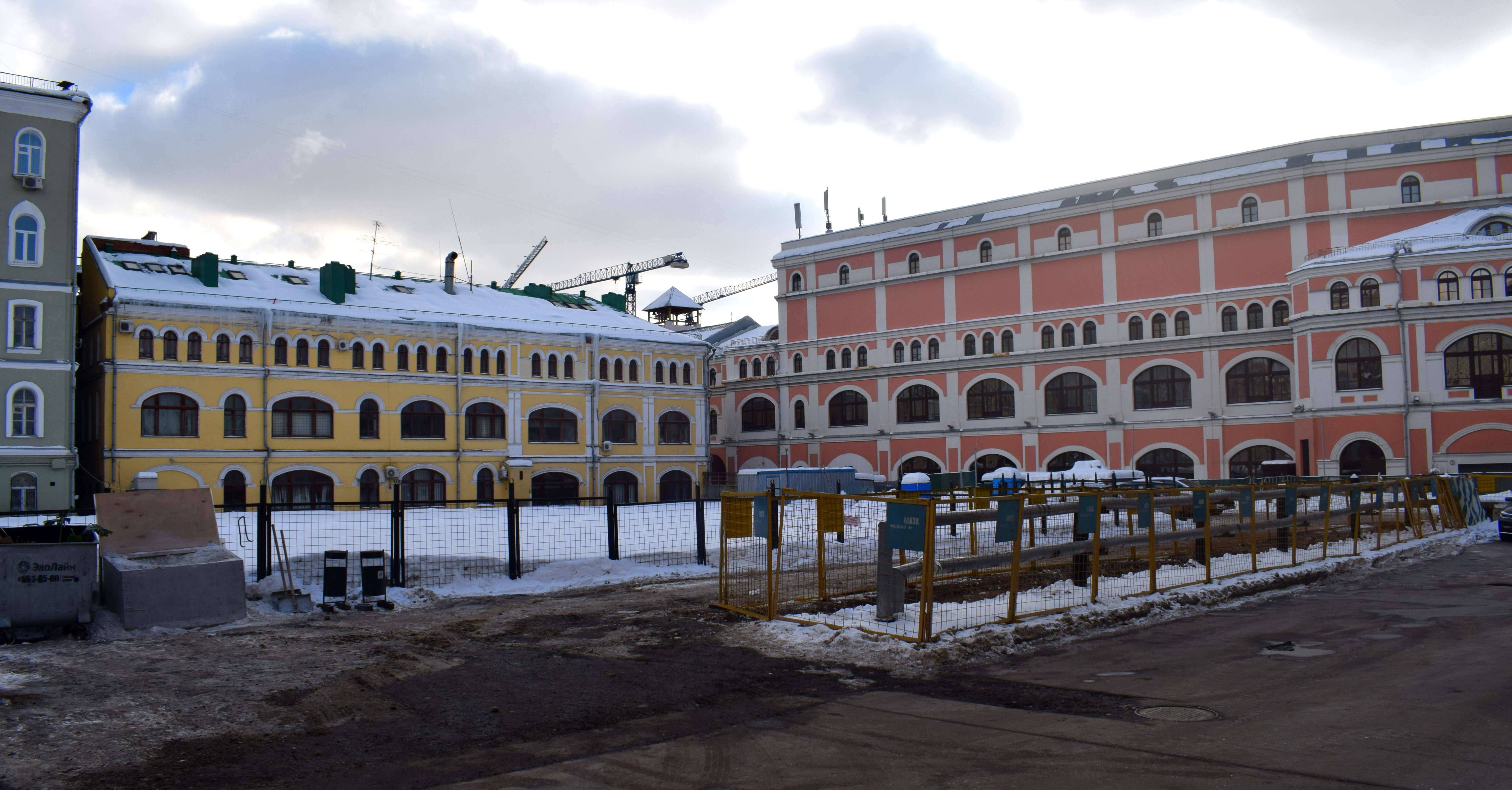 Some of the buildings in the center of Moscow are still completely abandoned.
Some of the buildings in the center of Moscow are still completely abandoned.
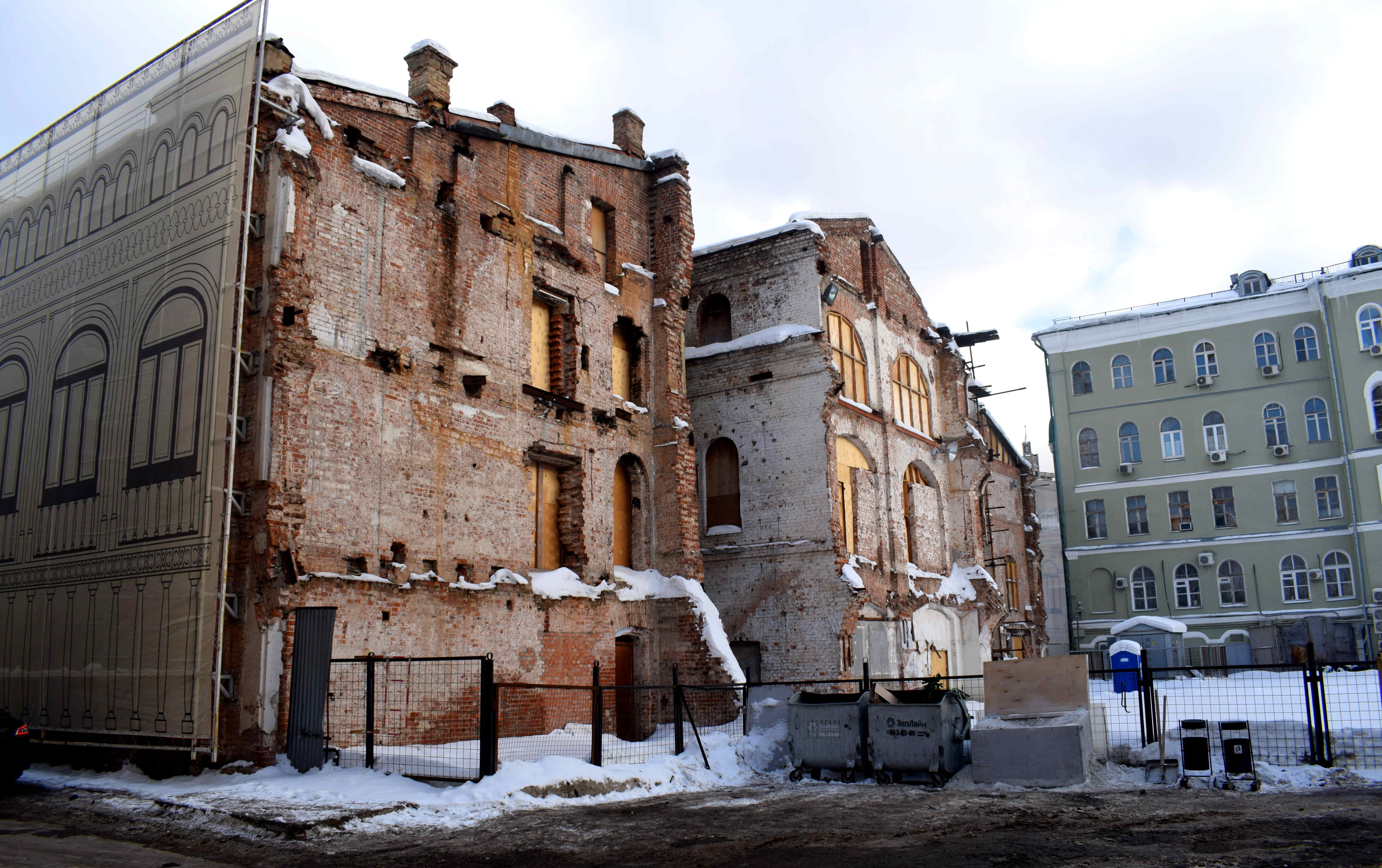 Staropansky Pereulok would be a perfect narrow street that could be pedestrianized, with shops and cafes open on the left side.
Staropansky Pereulok would be a perfect narrow street that could be pedestrianized, with shops and cafes open on the left side.
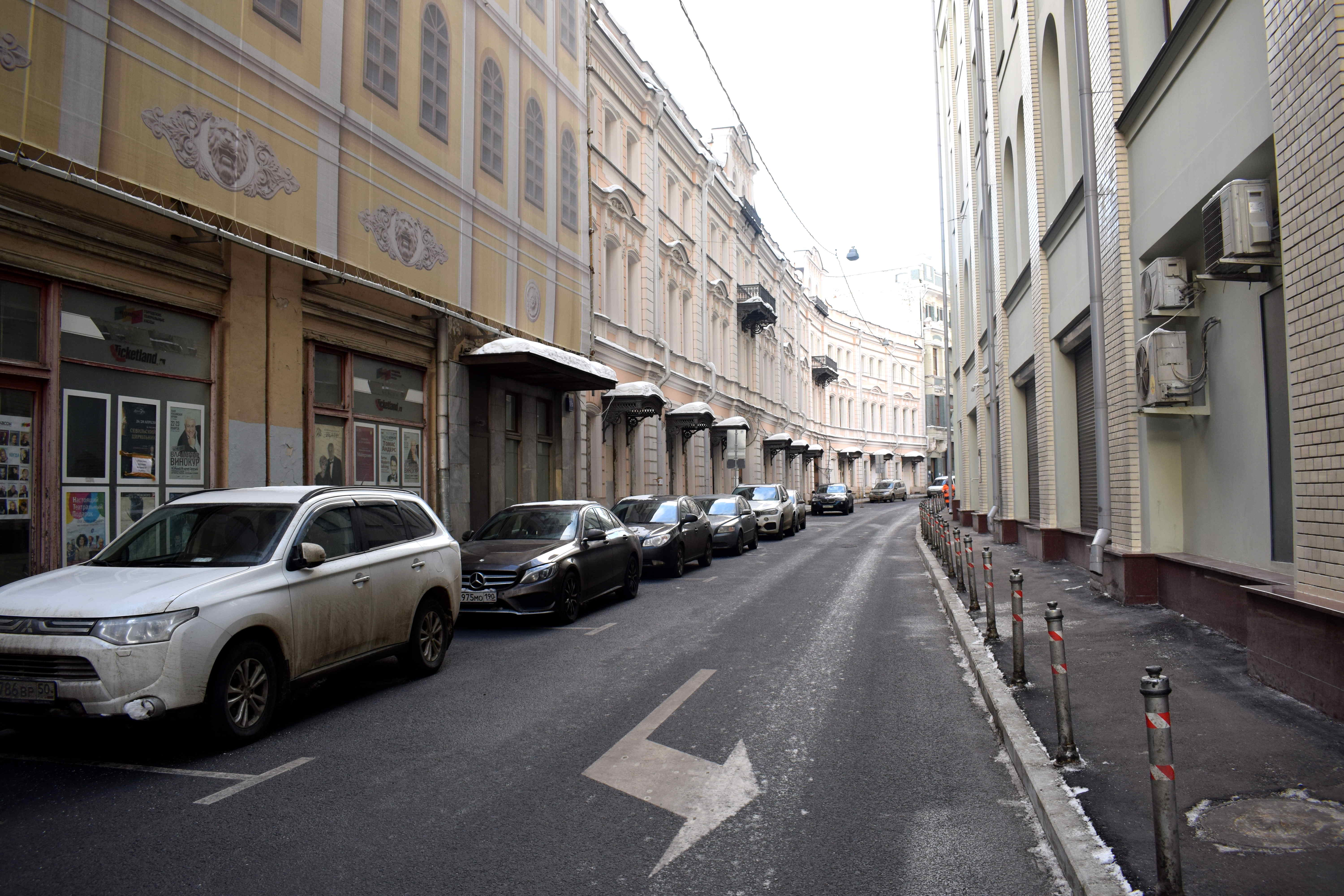
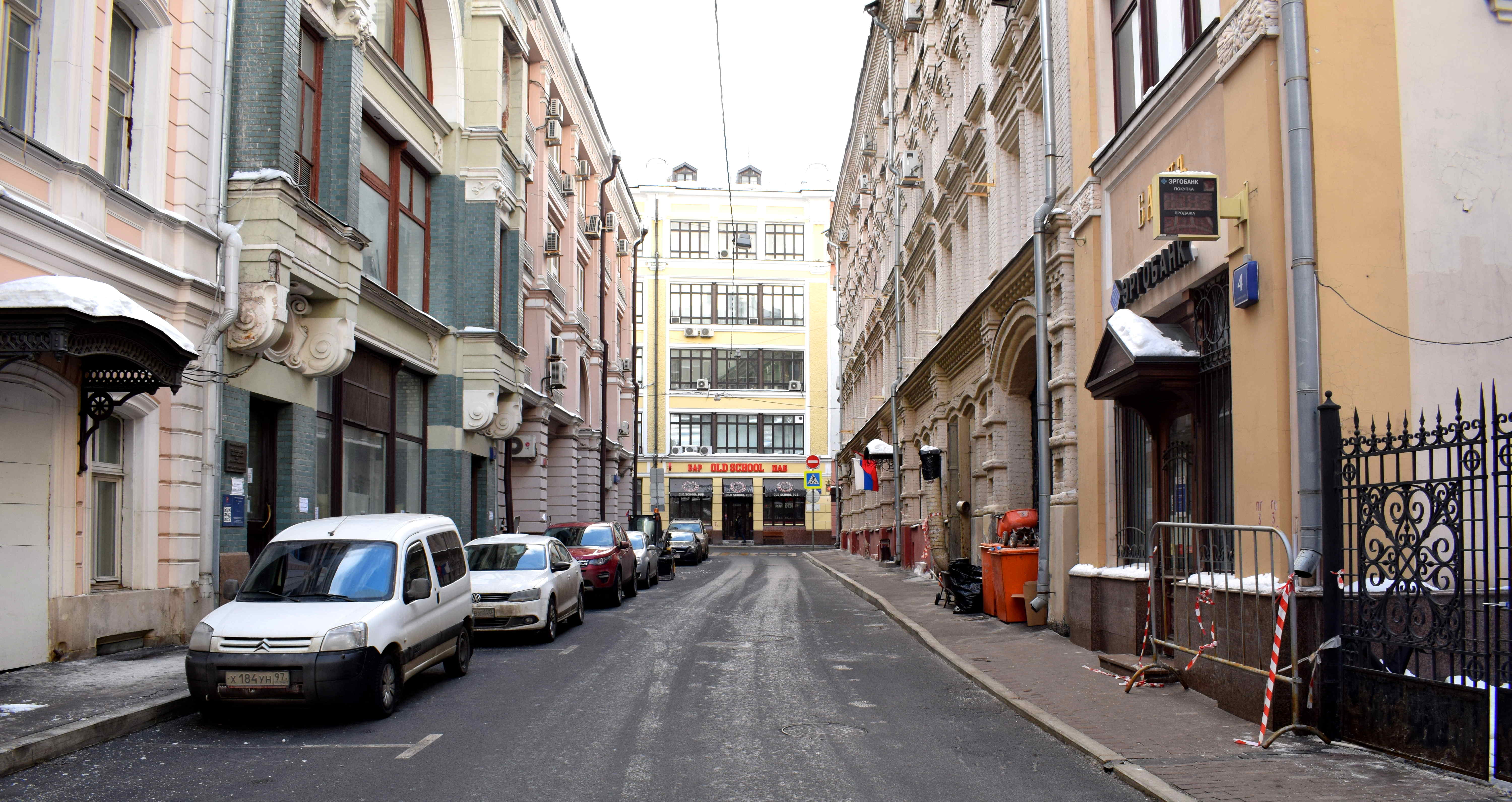
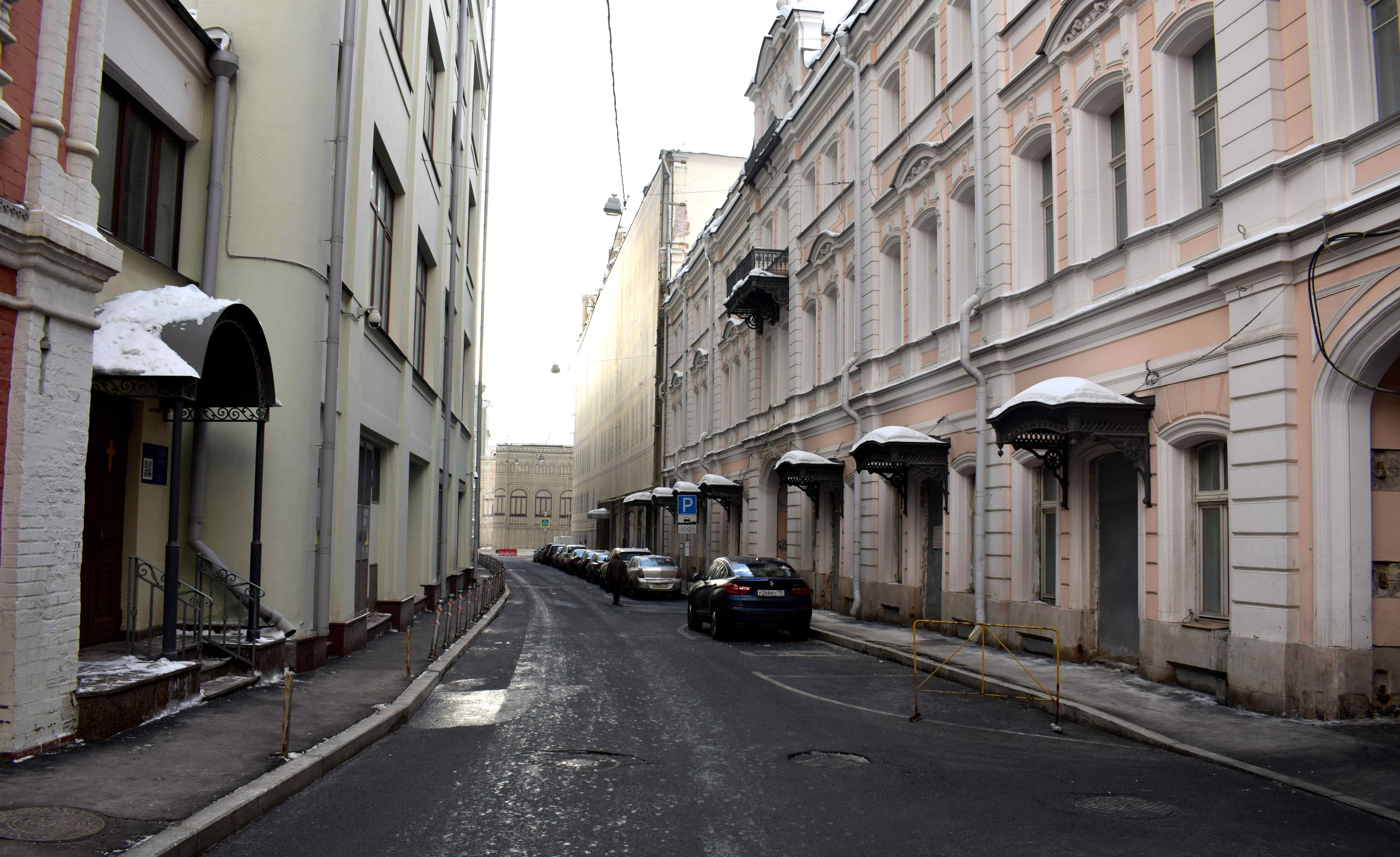 This street would then connect with Bolshoy Cherkassky Pereulok which already has a fair amount of restaurants and cafes and business activity on the street. This street would actually be the easiest to pedestrianize, since the businesses are already there.
This street would then connect with Bolshoy Cherkassky Pereulok which already has a fair amount of restaurants and cafes and business activity on the street. This street would actually be the easiest to pedestrianize, since the businesses are already there.
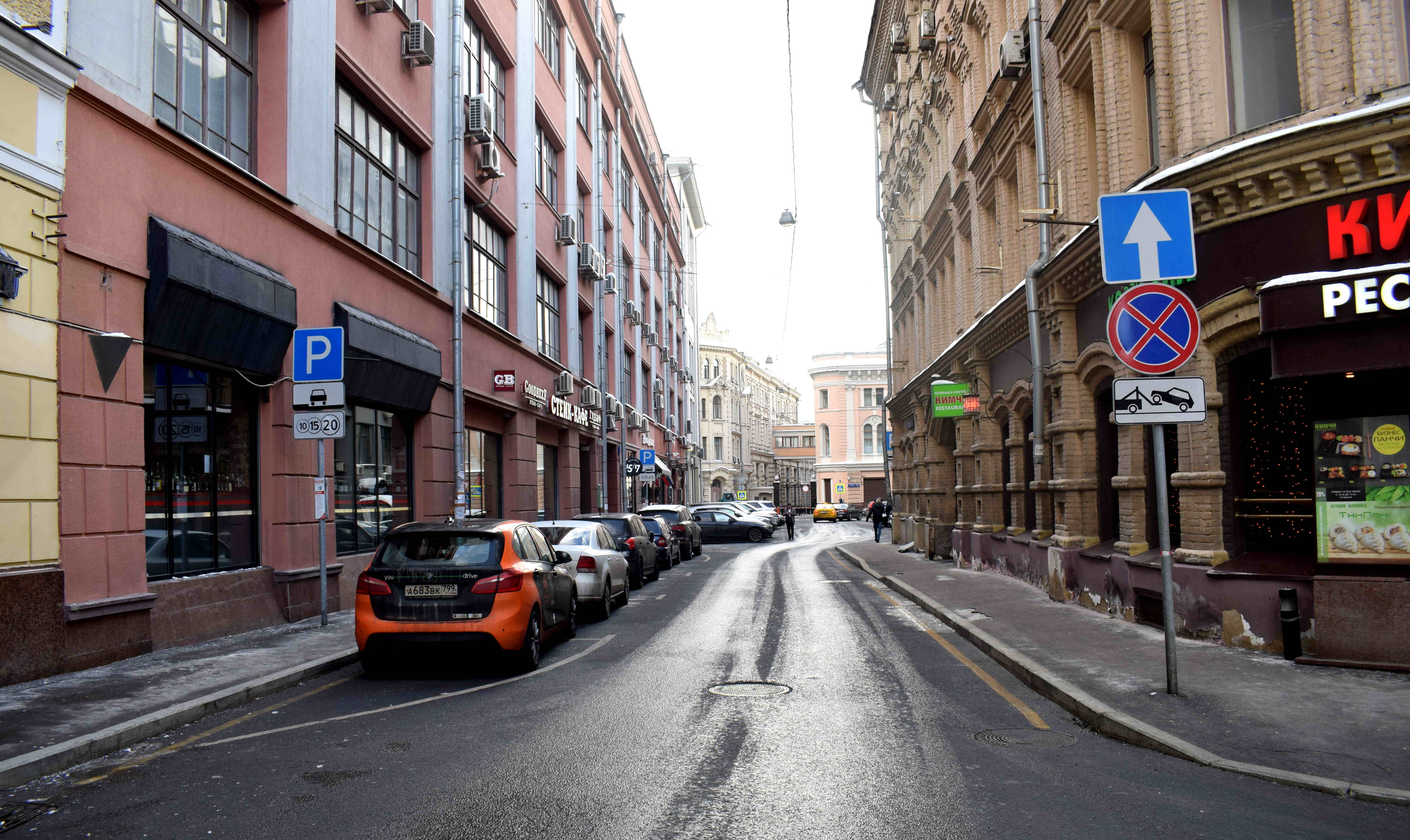 Most of the street is used for parking anyway.
Most of the street is used for parking anyway.
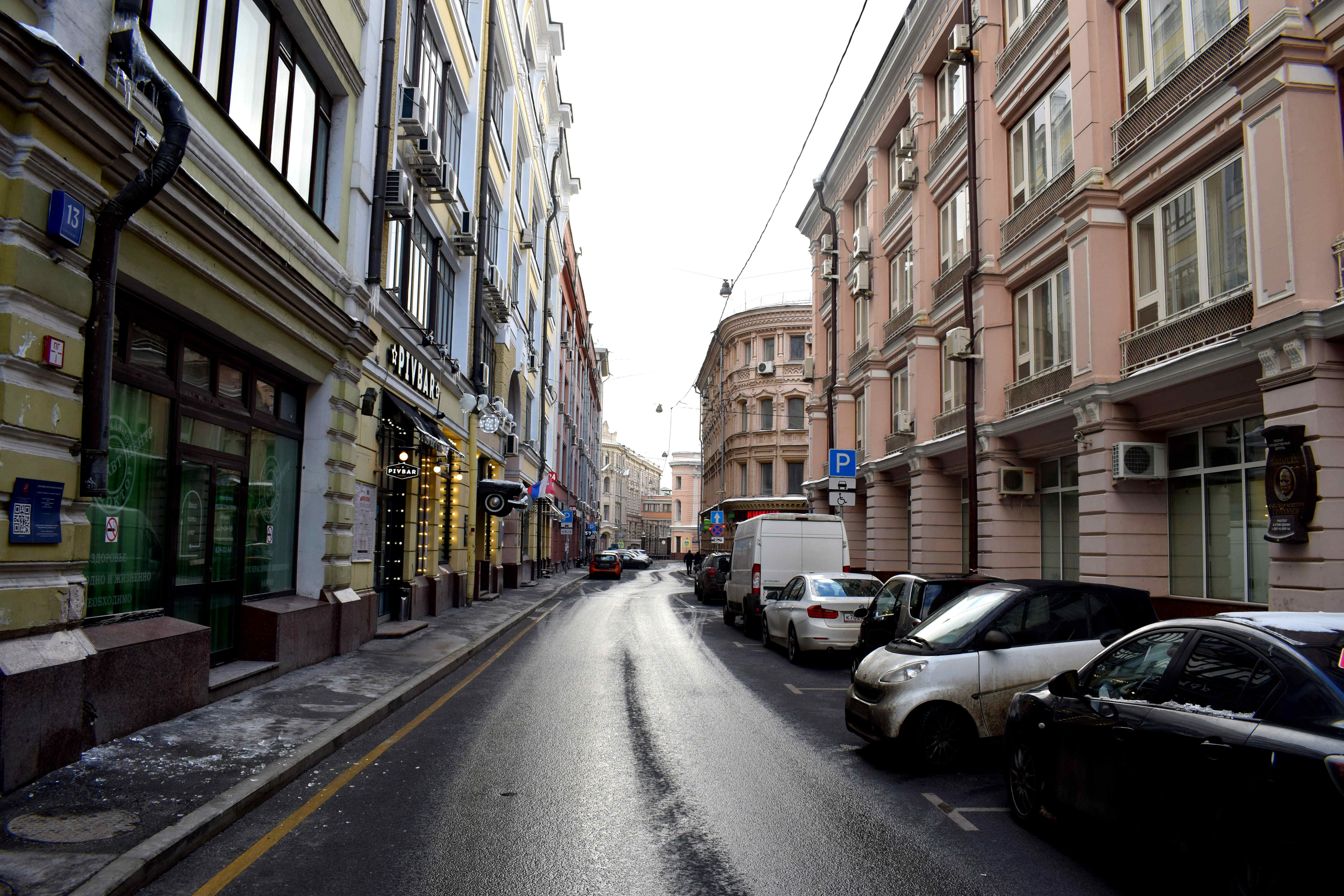
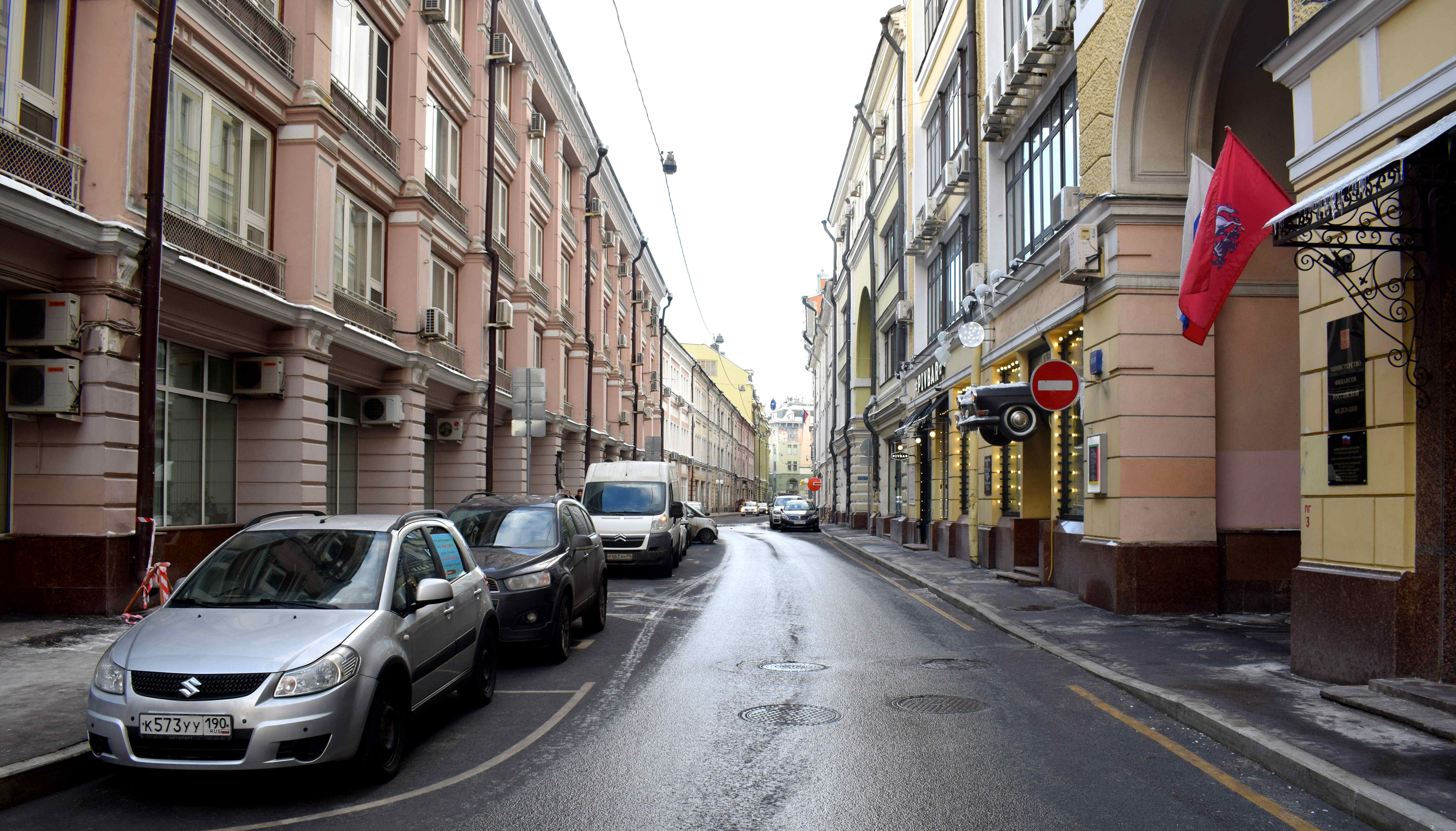 The streets are very narrow and the architecture is beautiful. If this street were pedestrianized it would lead right to Nikolskaya Street and go a long way in turning this area of Moscow into a beautiful pedestrian area.
The streets are very narrow and the architecture is beautiful. If this street were pedestrianized it would lead right to Nikolskaya Street and go a long way in turning this area of Moscow into a beautiful pedestrian area.
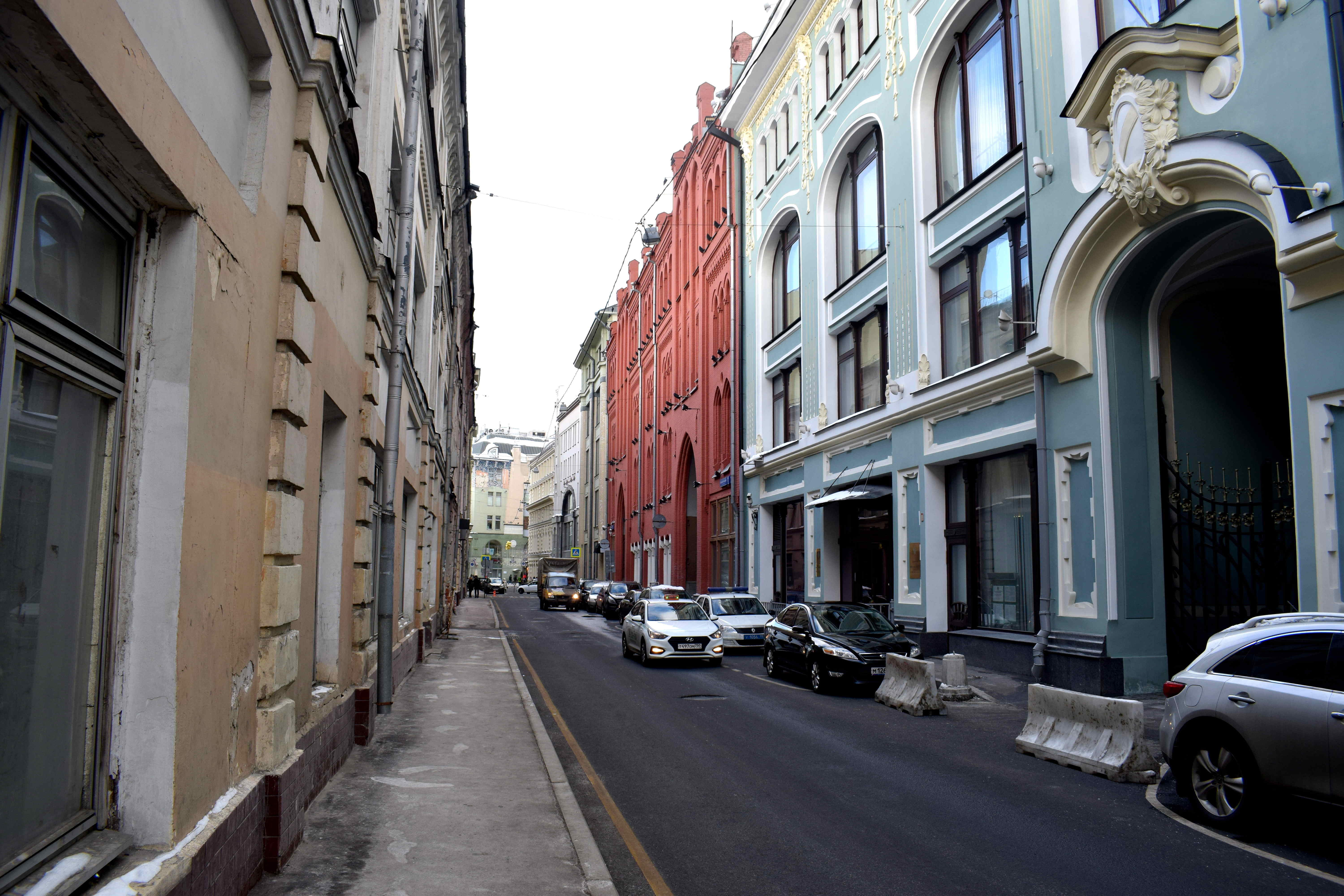
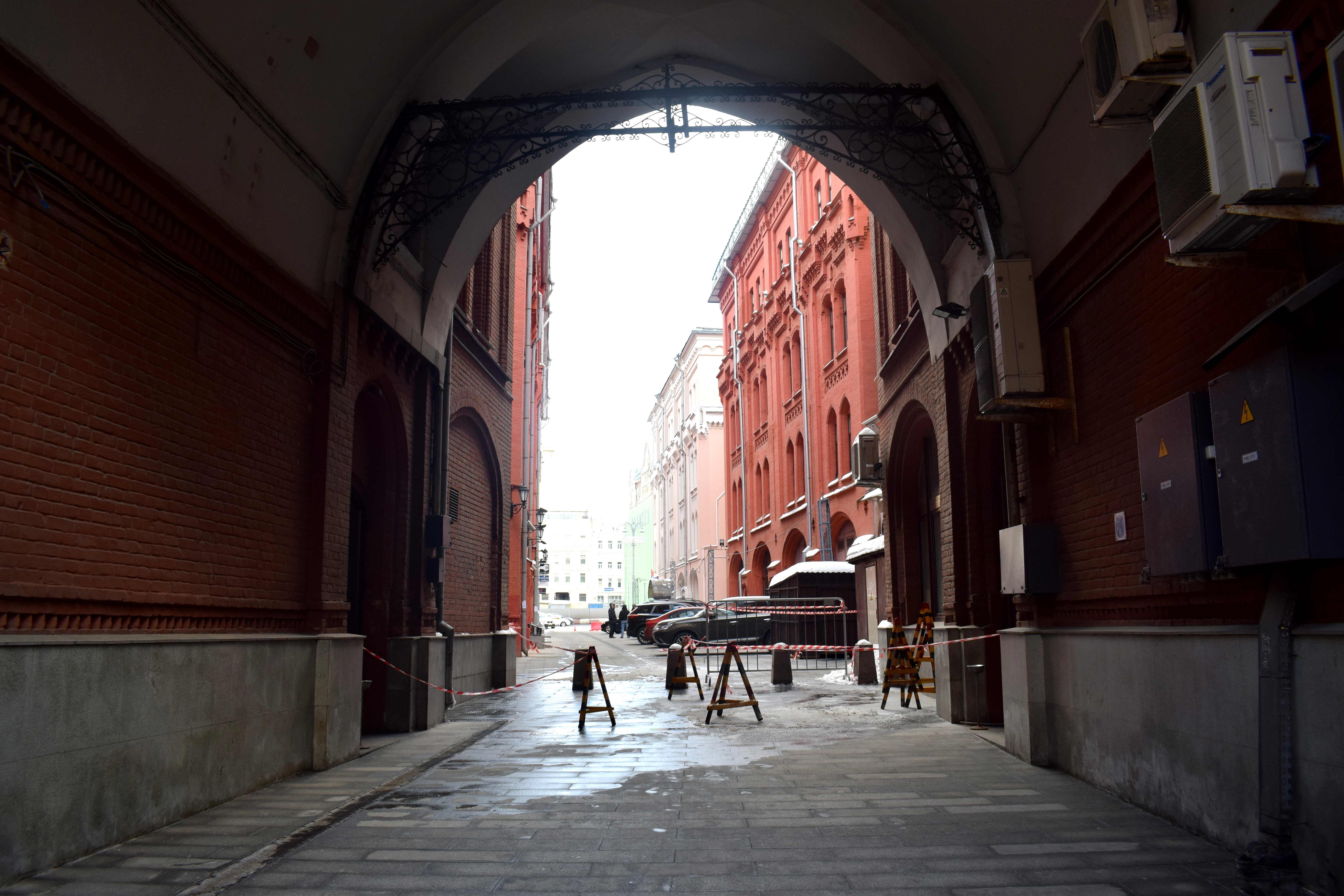
Just imagine if this area was devoted to cafes and bars instead of cars. It would be one of the best parts of Moscow to visit.
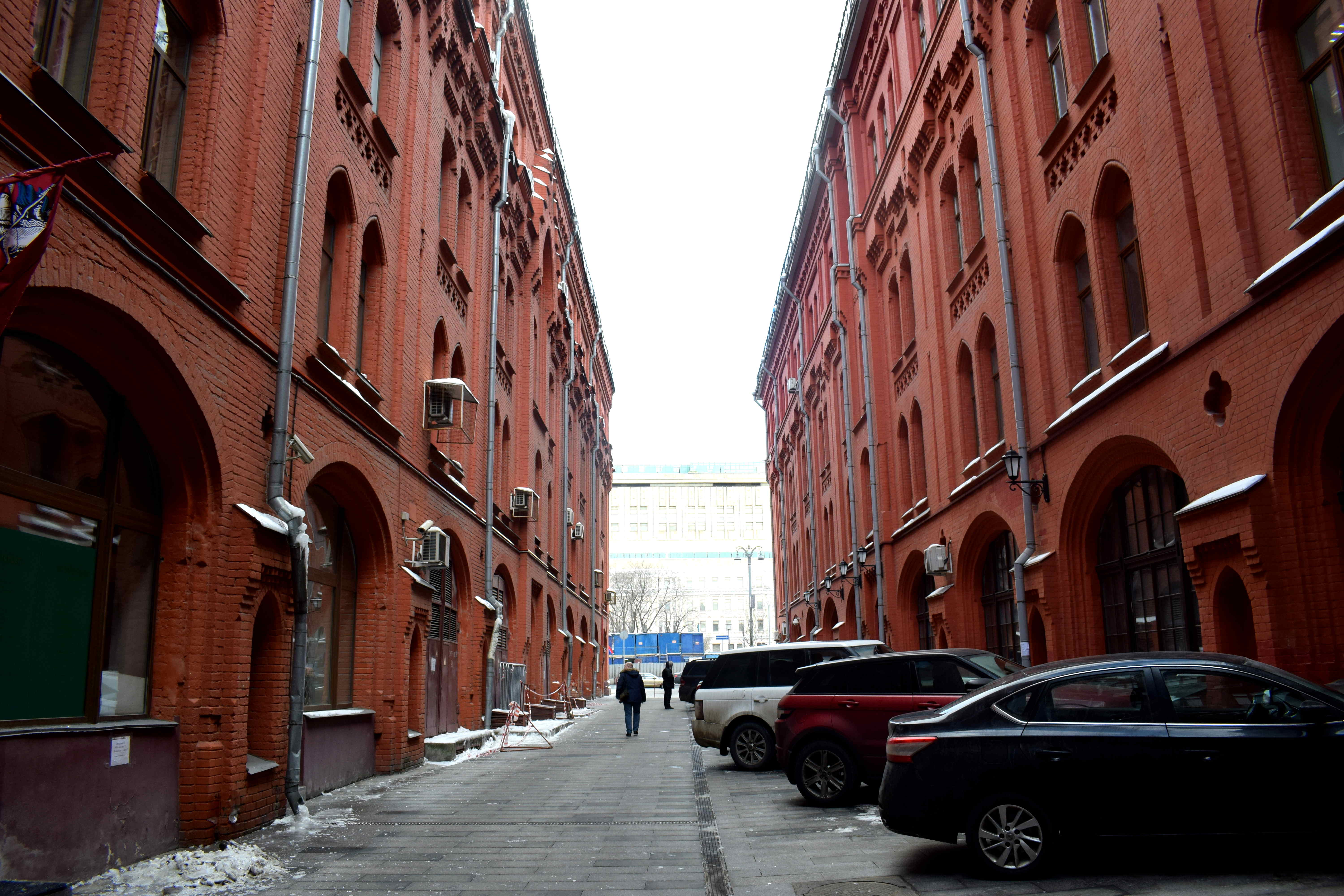 As things currently stand, this is just wasted urban space in the center.
As things currently stand, this is just wasted urban space in the center.
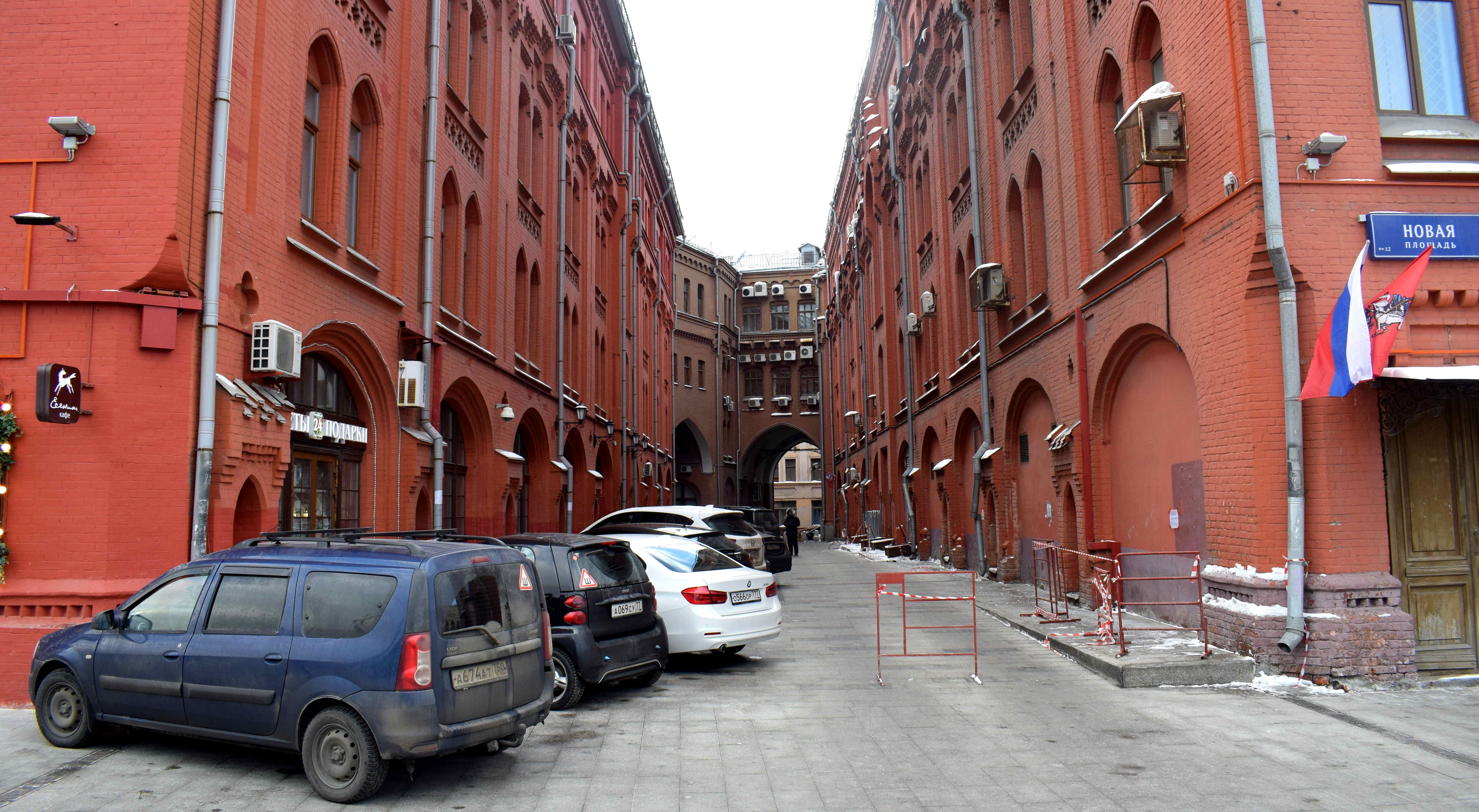 There’s a group of Moscow activists who have lobbied for several years to have the walls of Kitai Gorod restored. Moscow has been able to restore other monuments that were destroyed by the communists, such as the Cathedral of Christ the Savoir. So the same could technically be done for the walls of Kitai Gorod, which used to run along this sidewalk.
There’s a group of Moscow activists who have lobbied for several years to have the walls of Kitai Gorod restored. Moscow has been able to restore other monuments that were destroyed by the communists, such as the Cathedral of Christ the Savoir. So the same could technically be done for the walls of Kitai Gorod, which used to run along this sidewalk.
